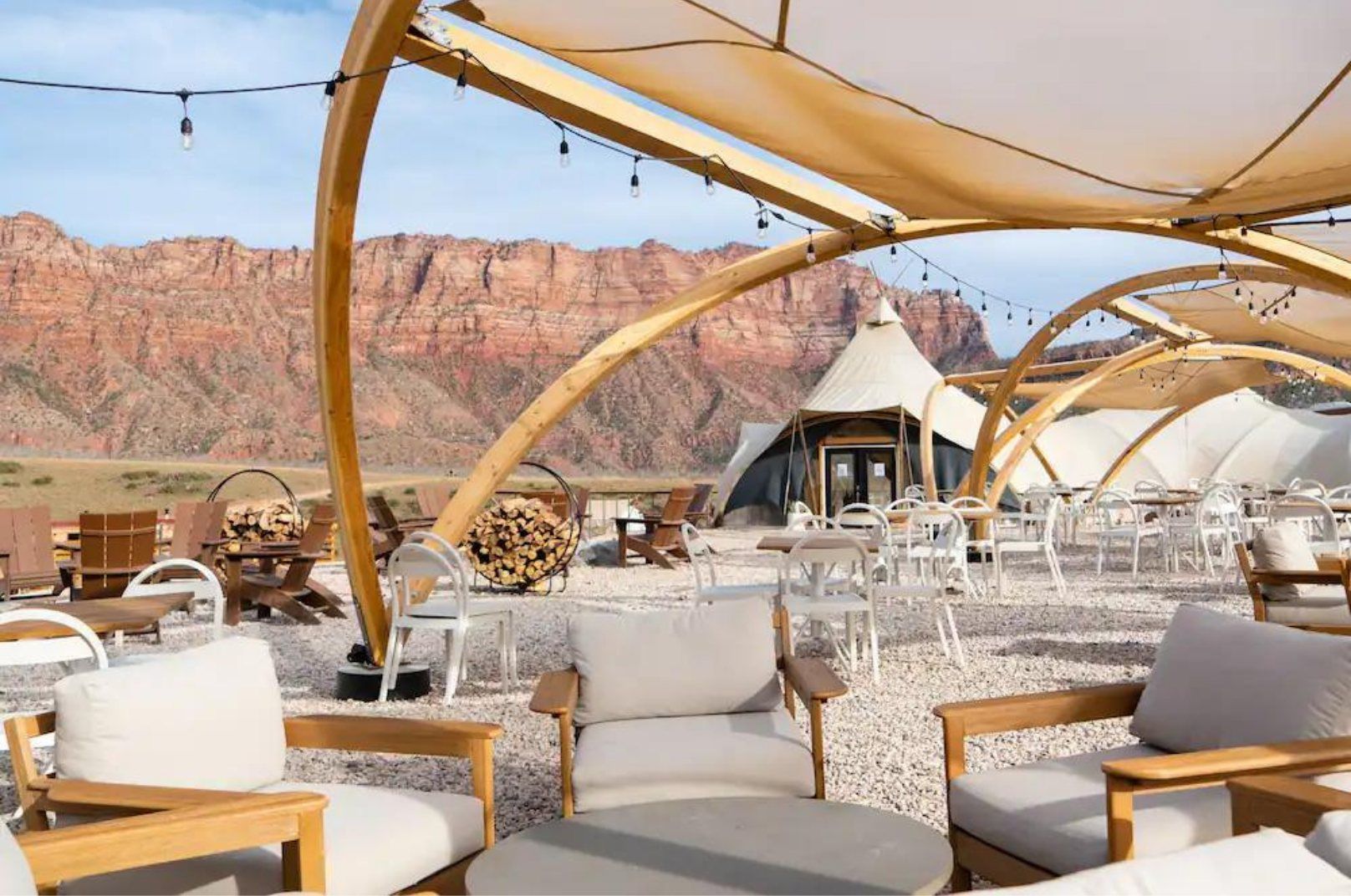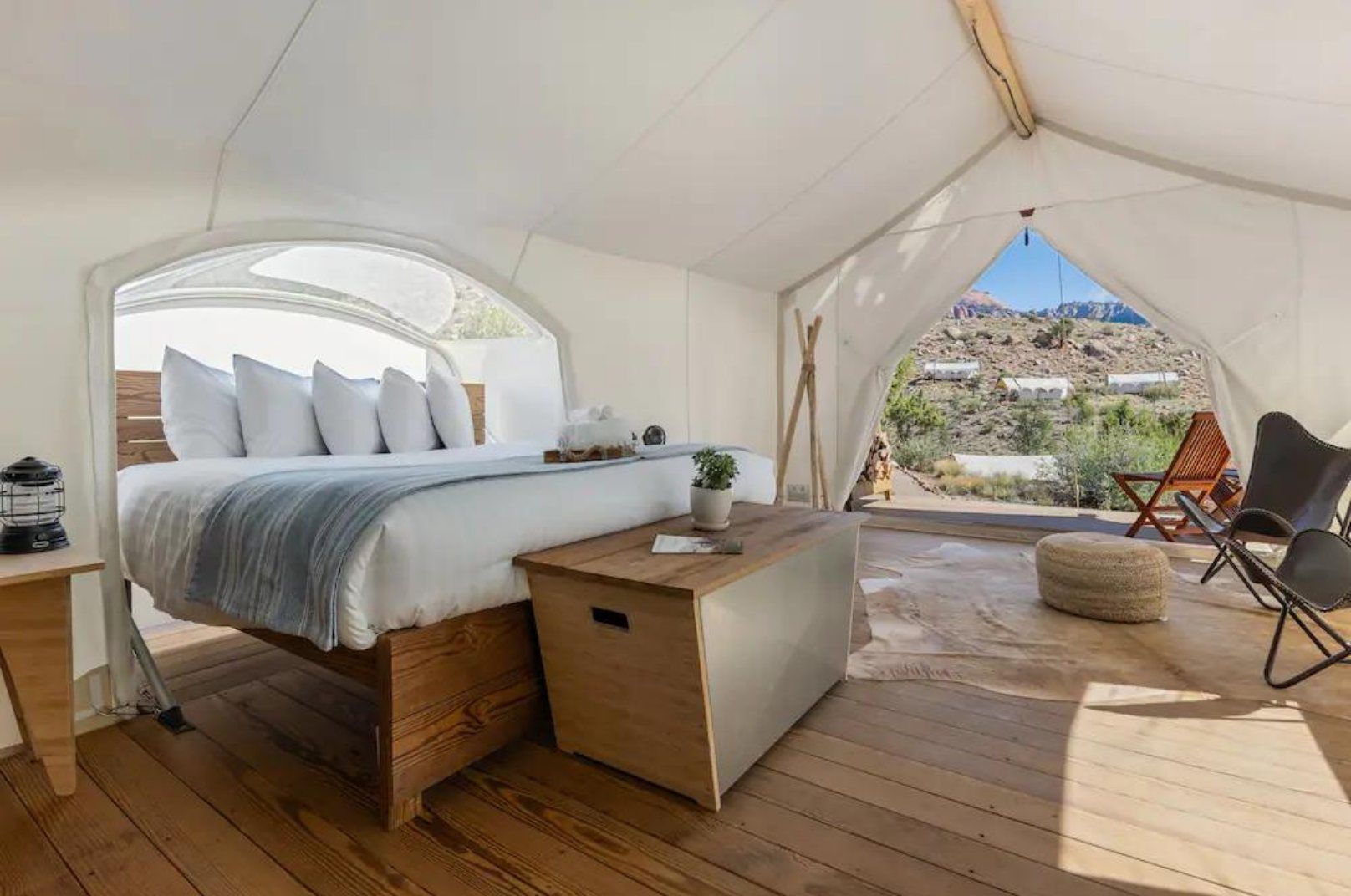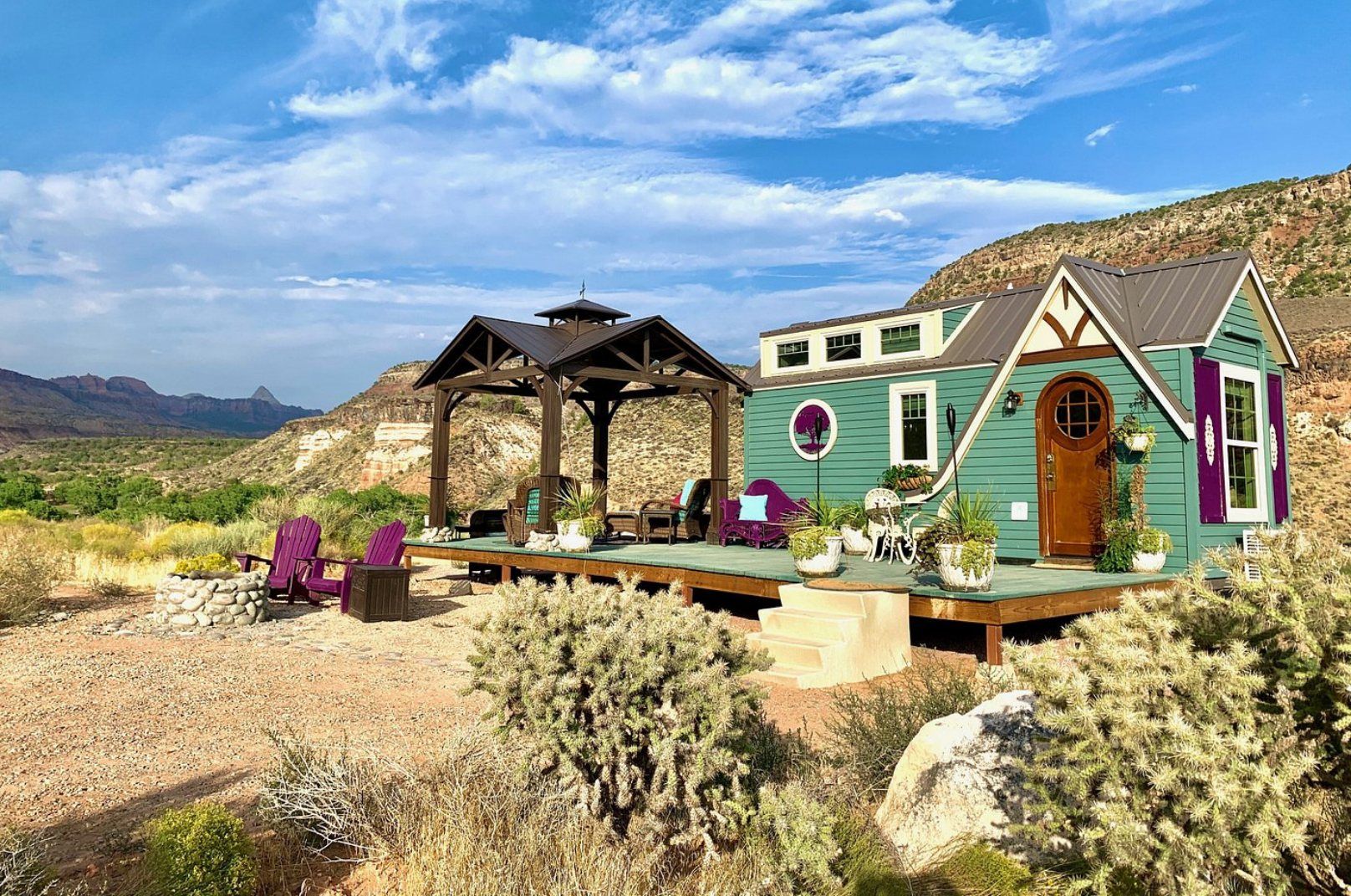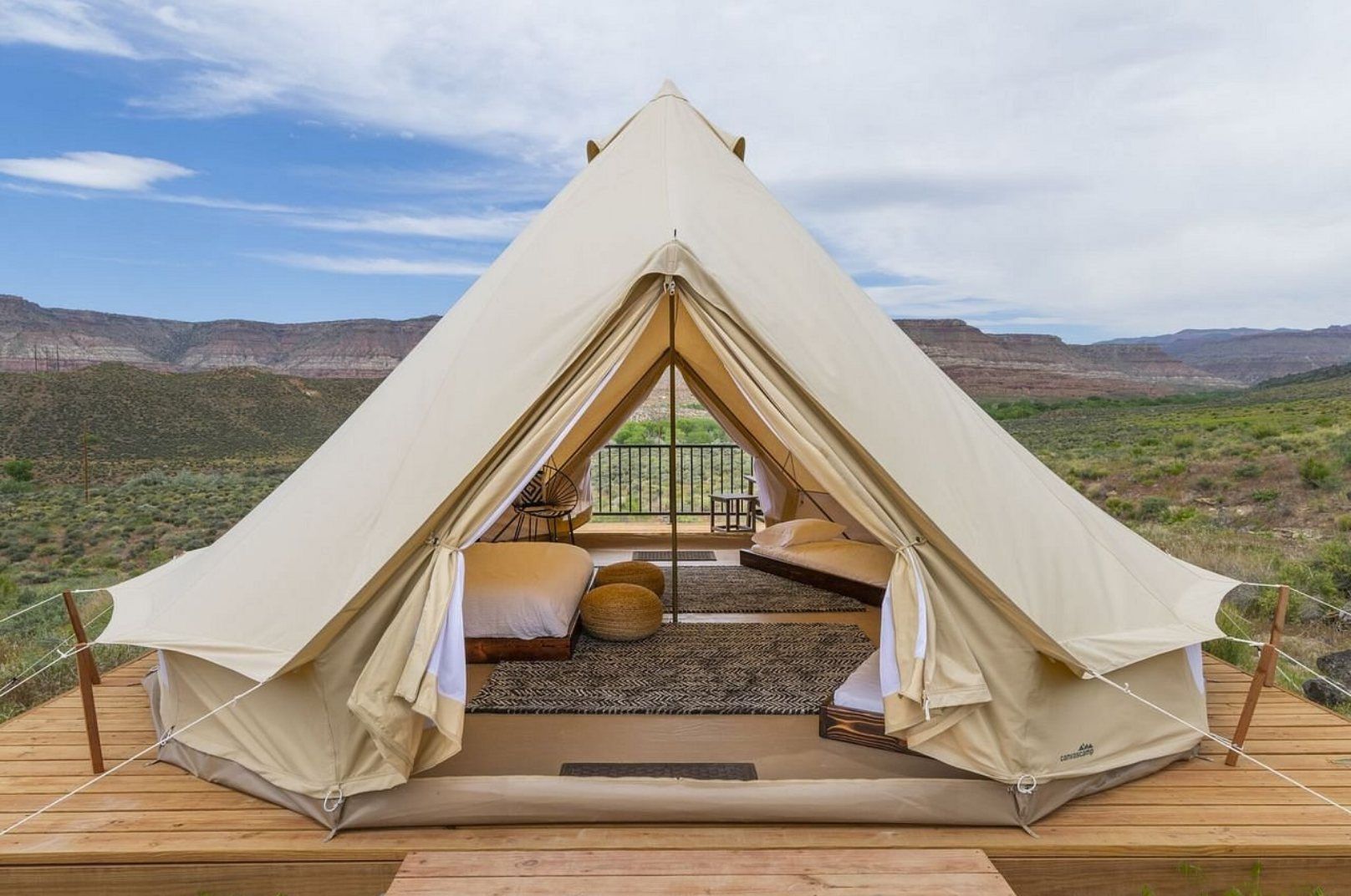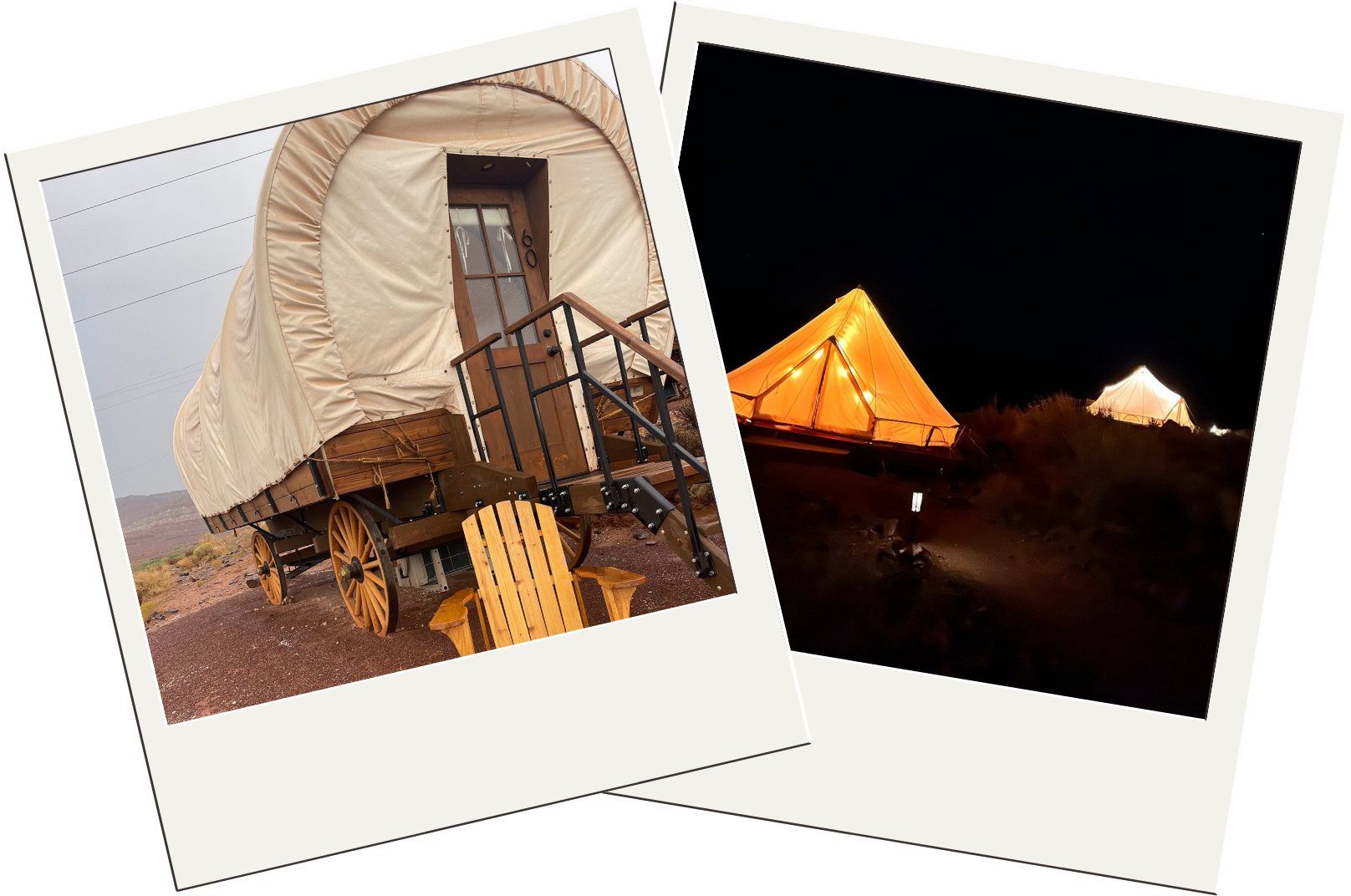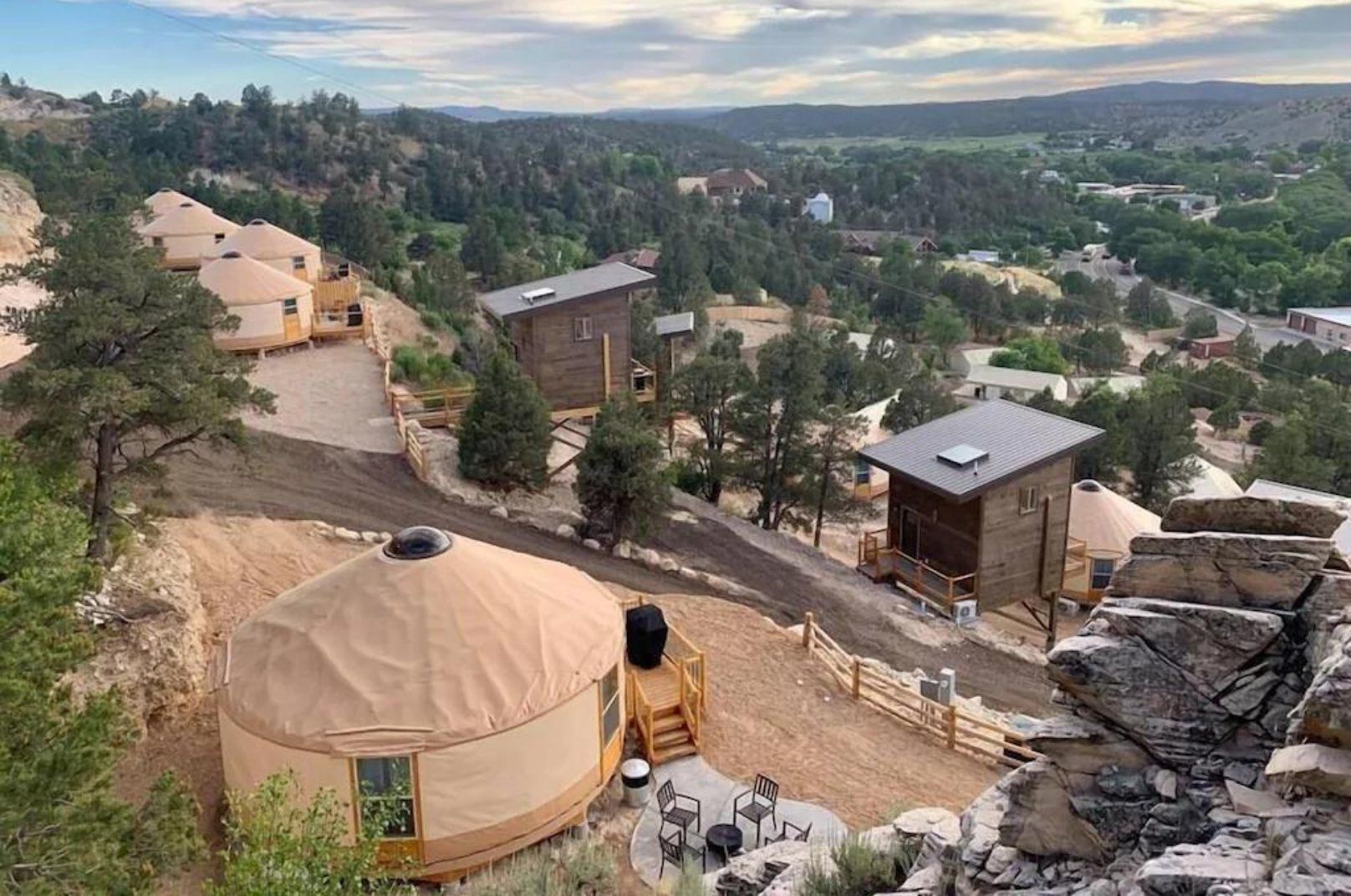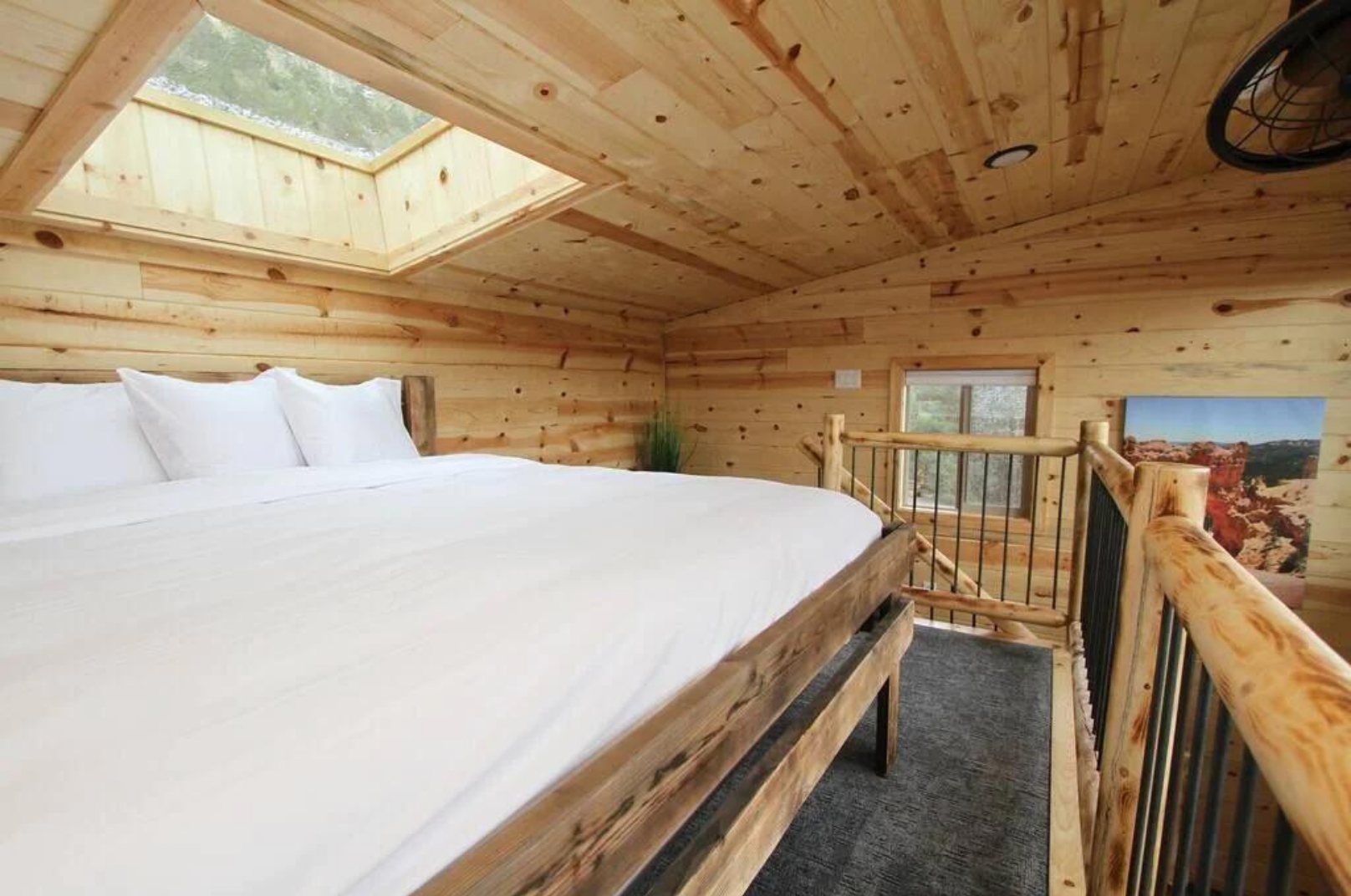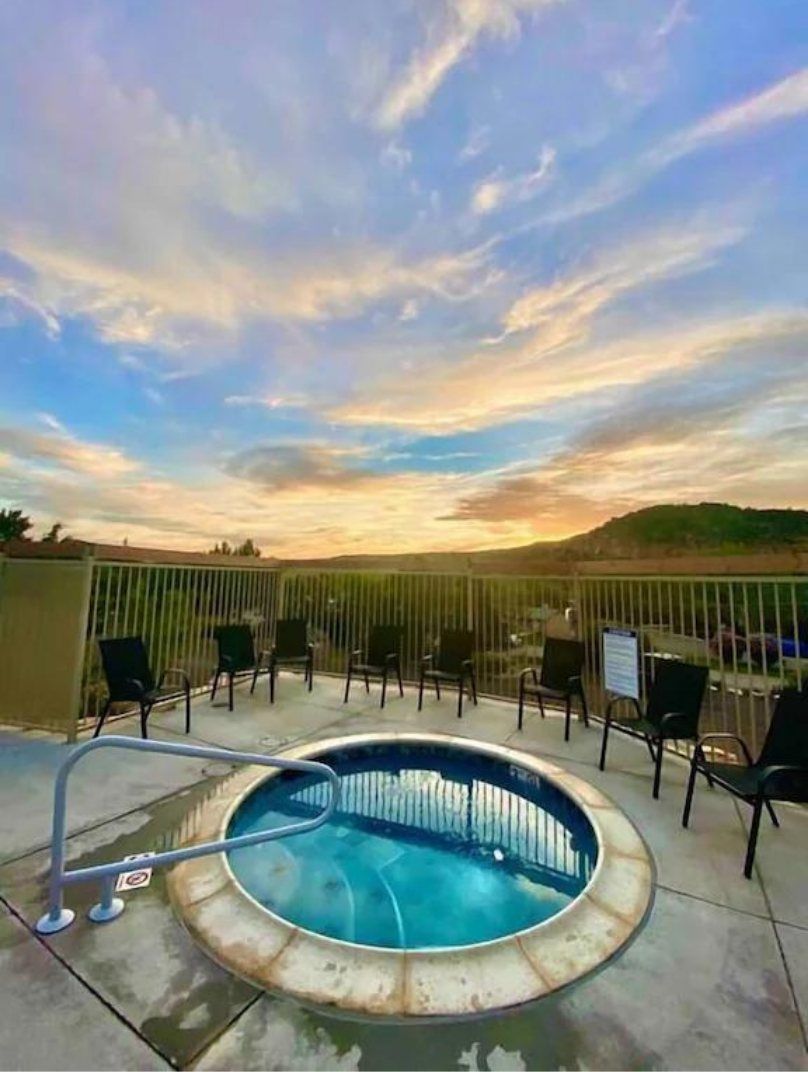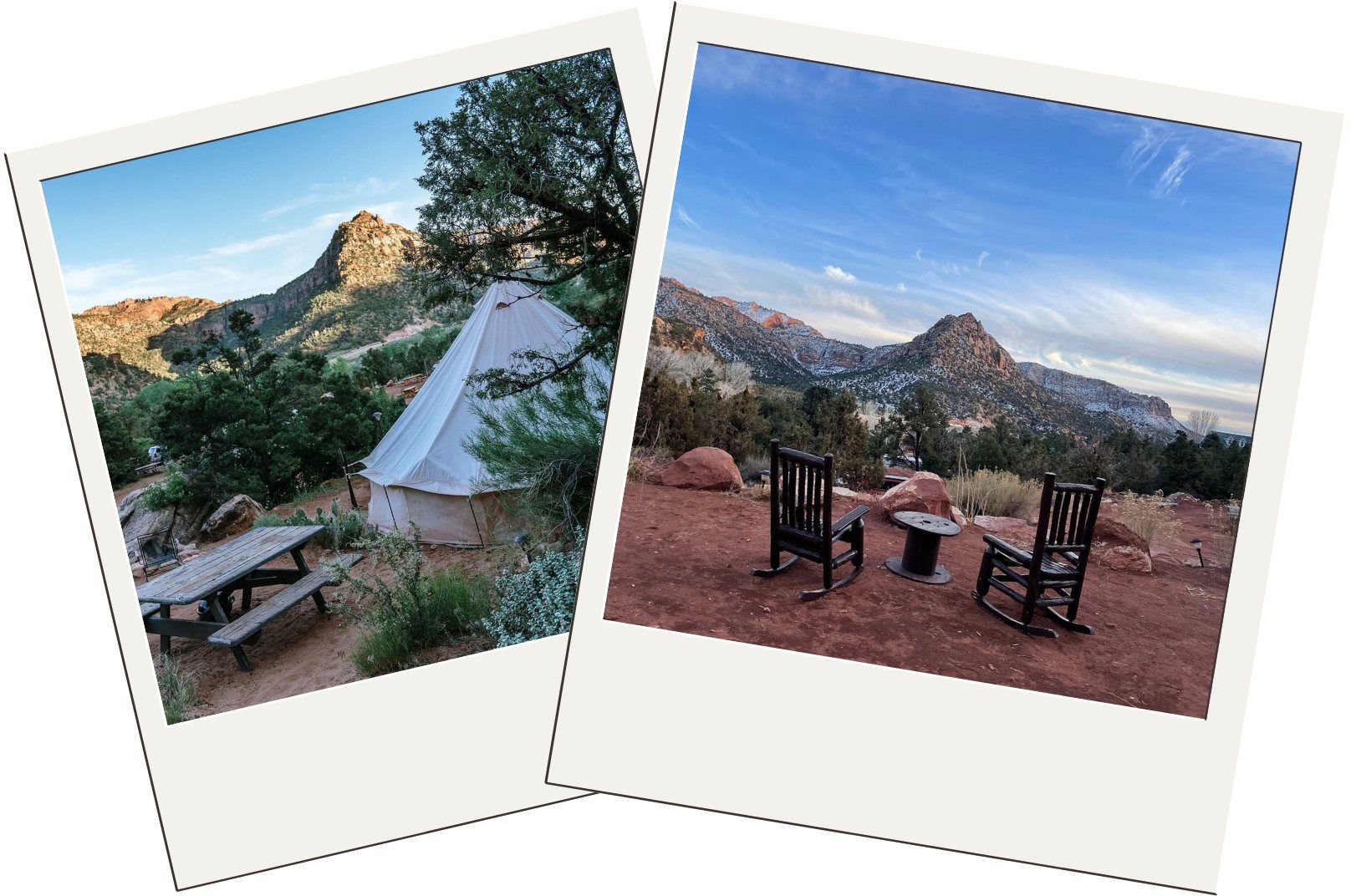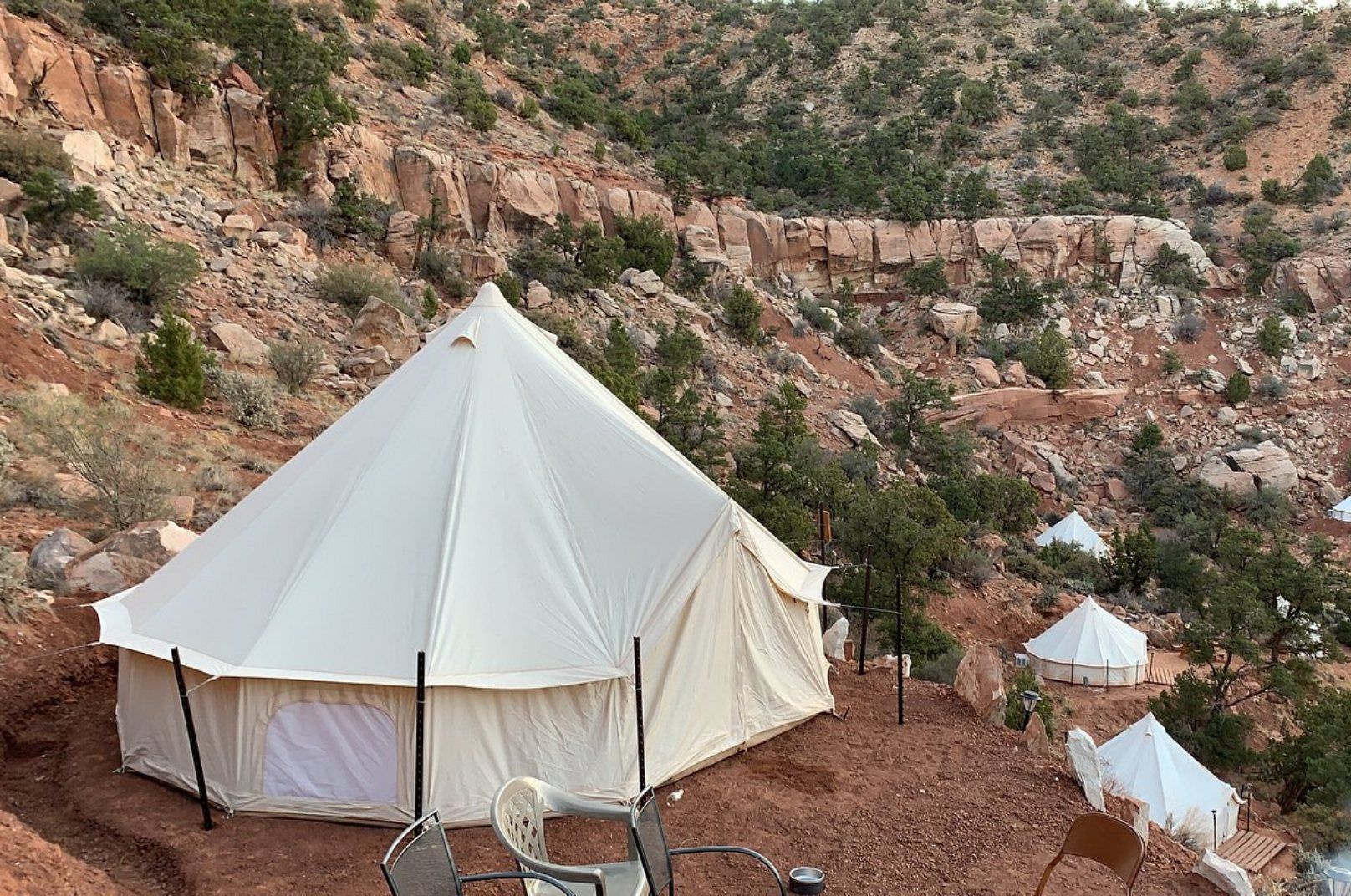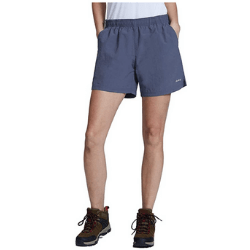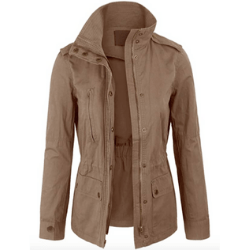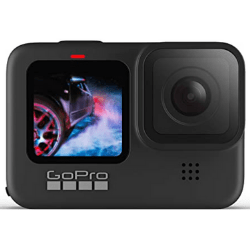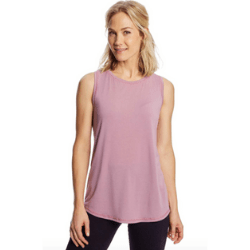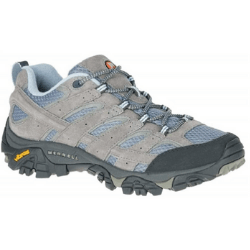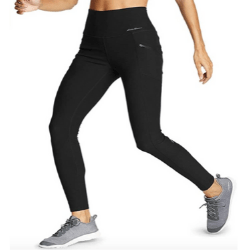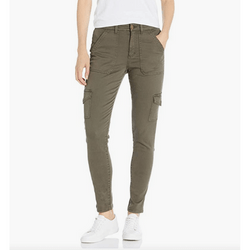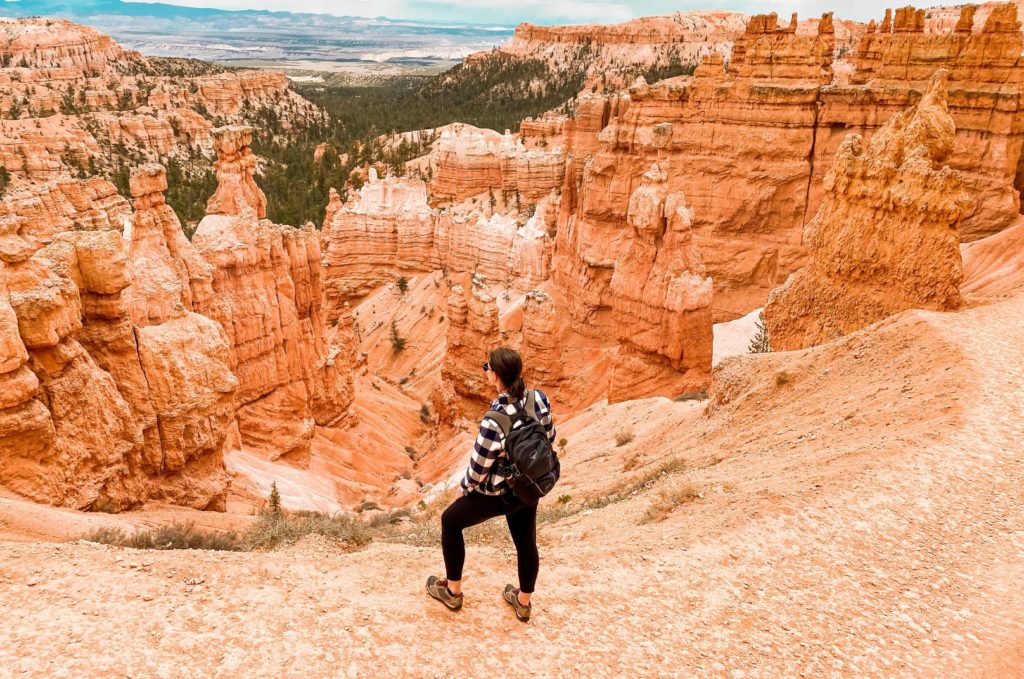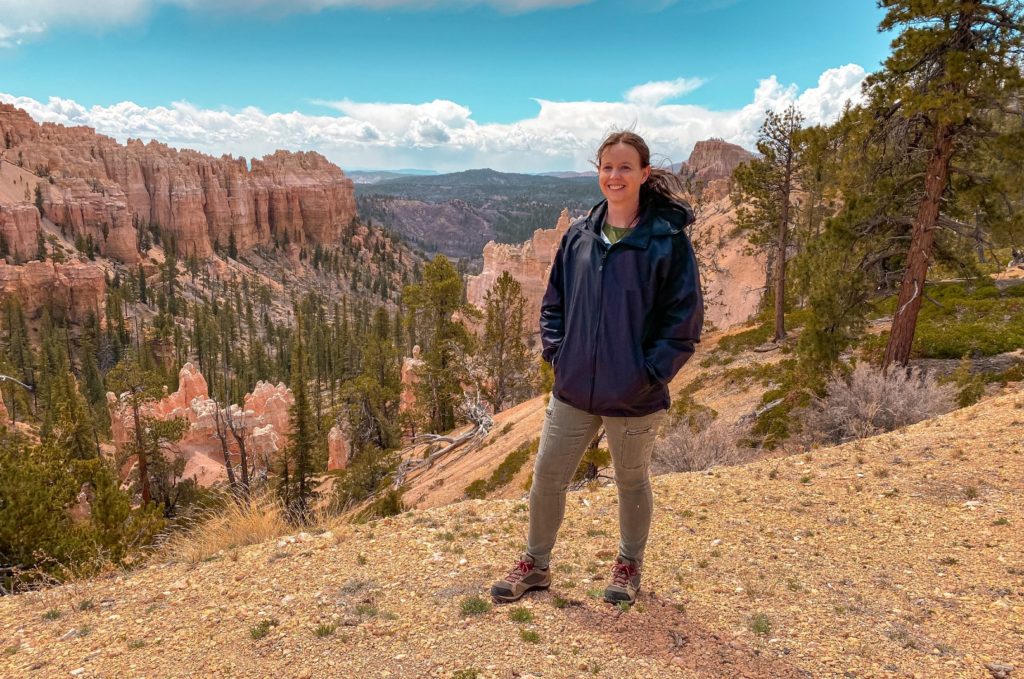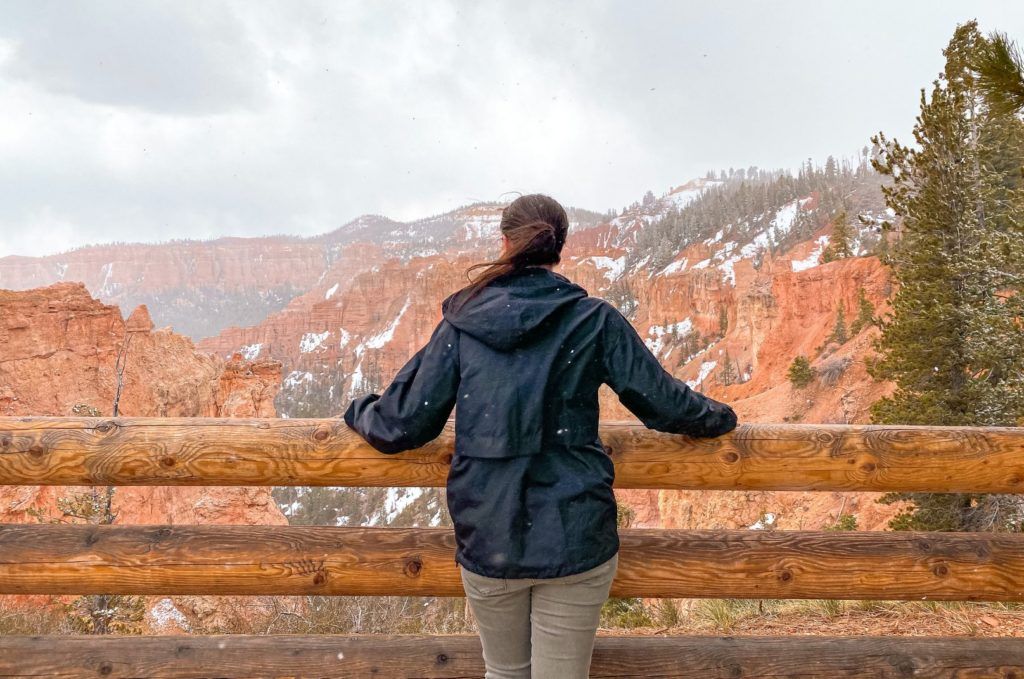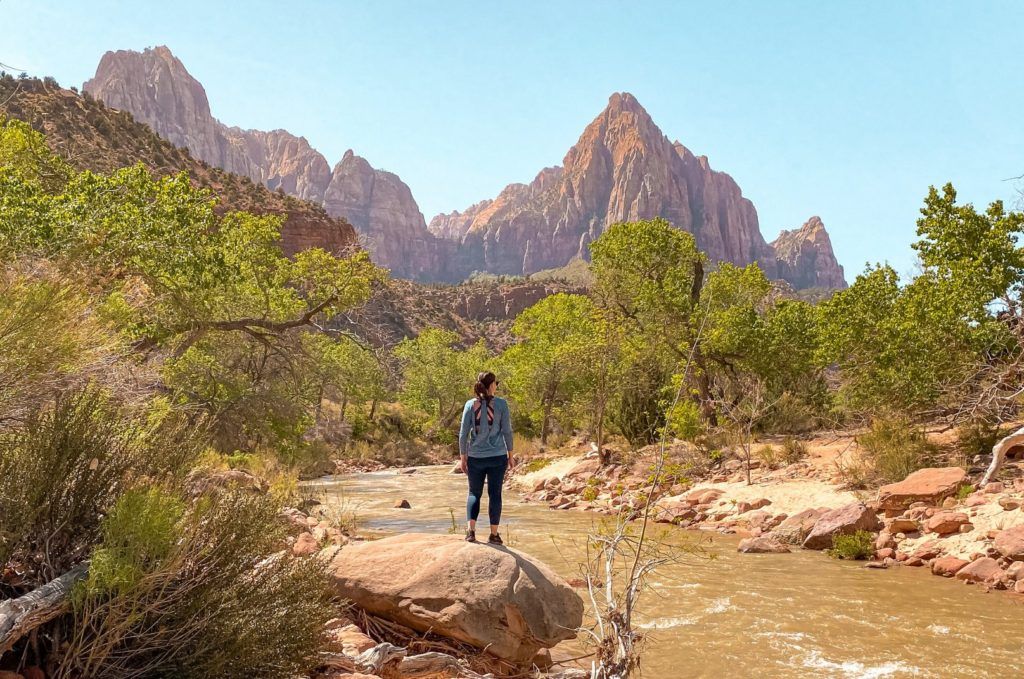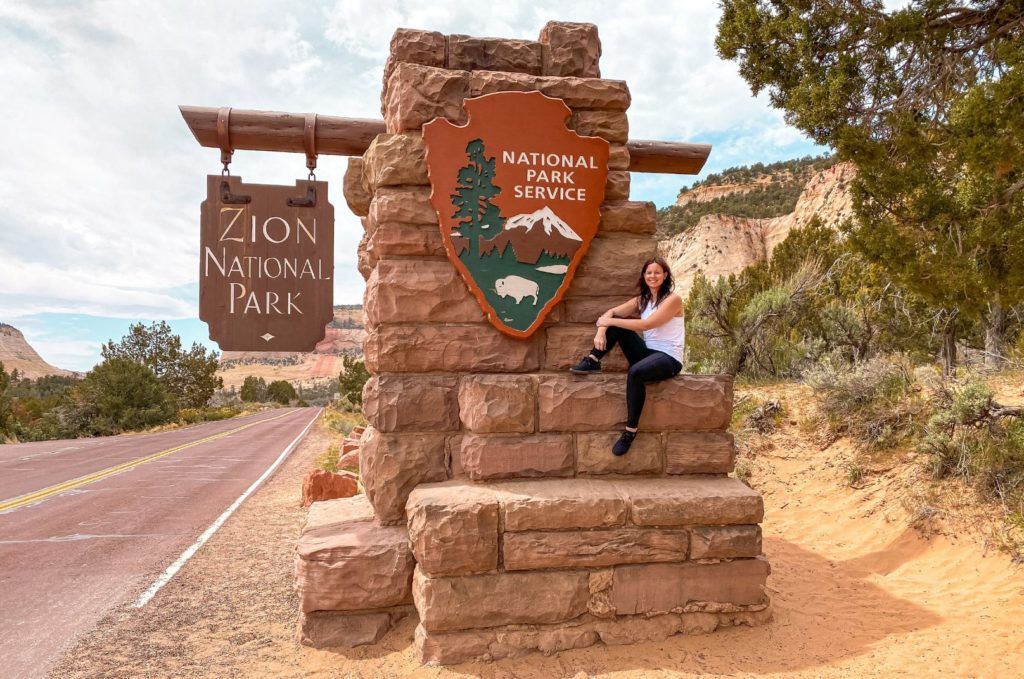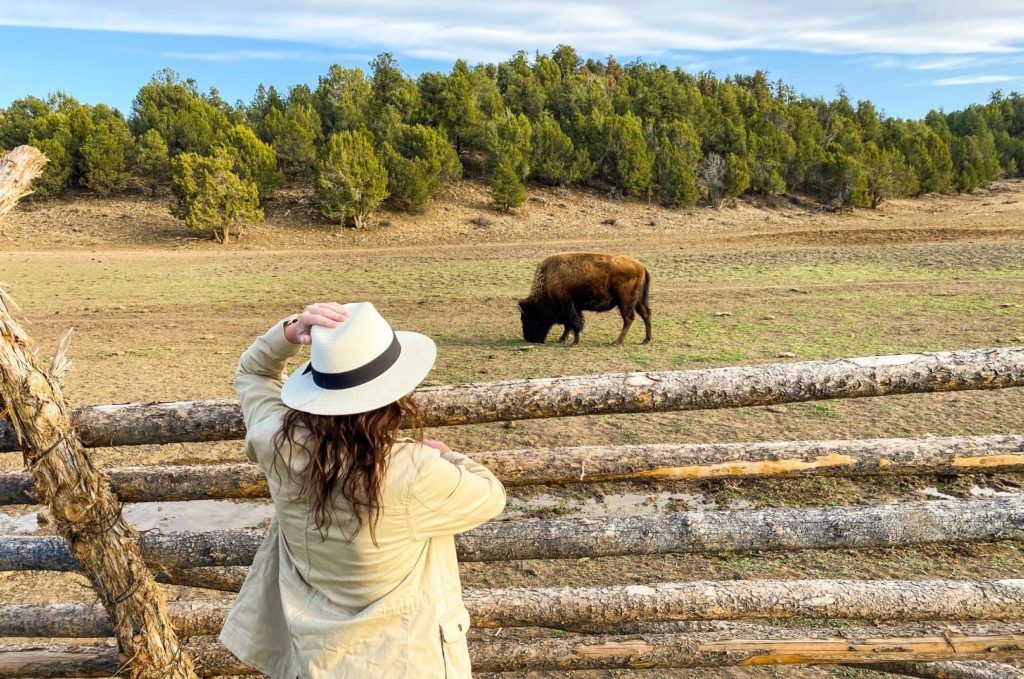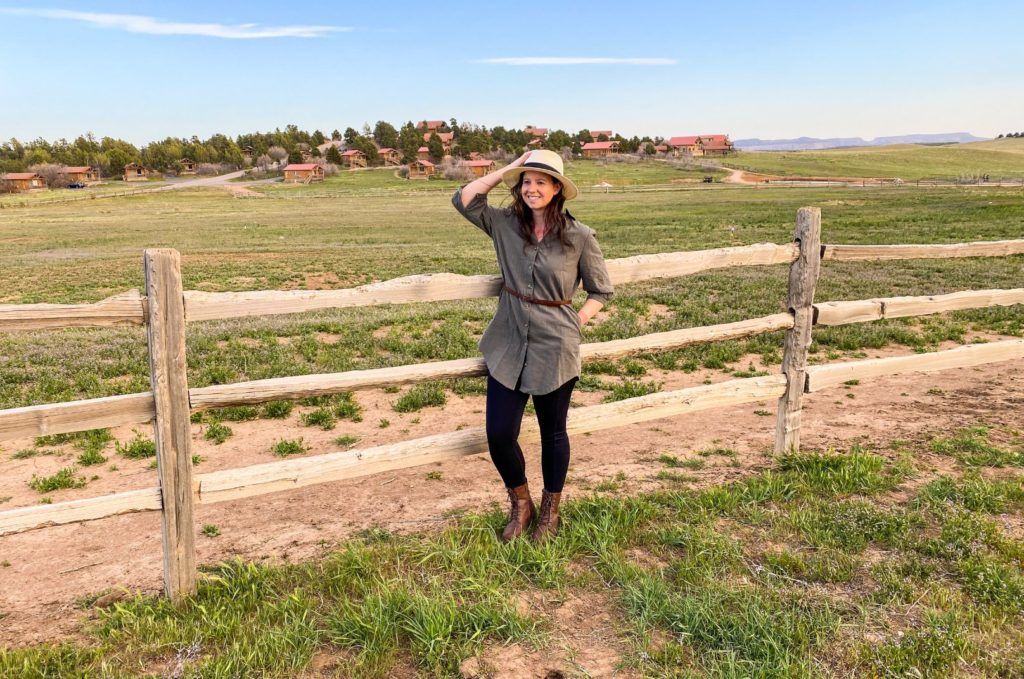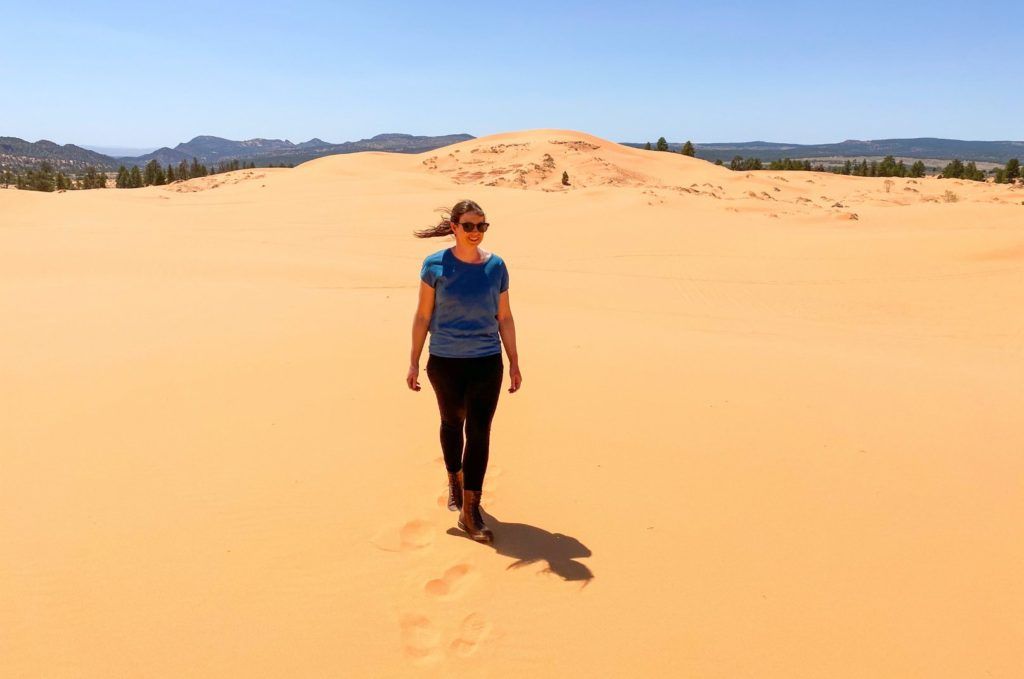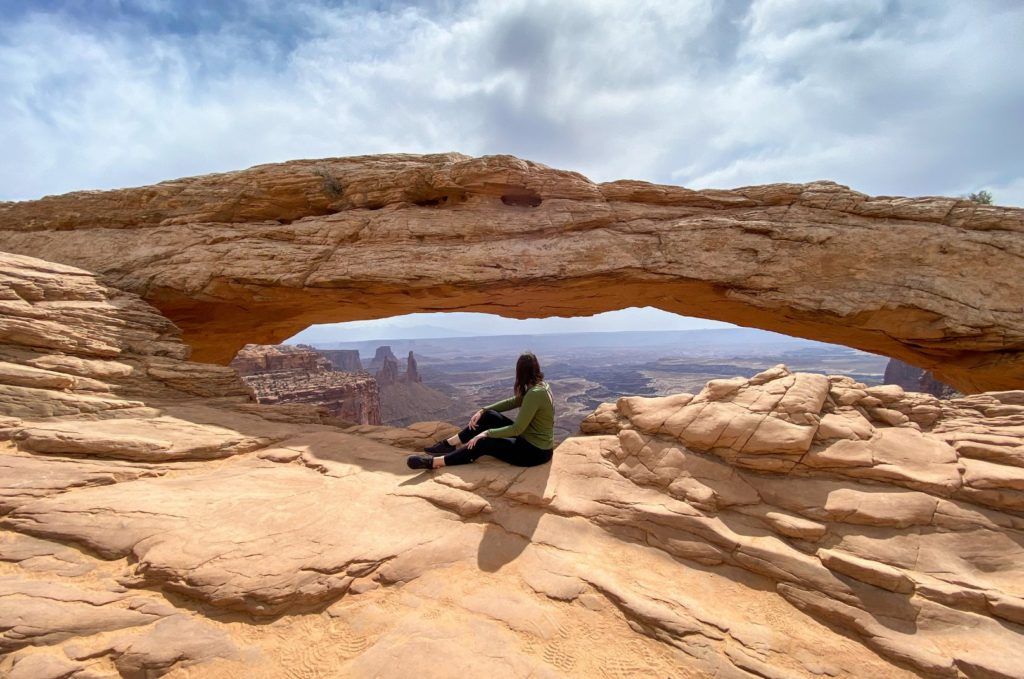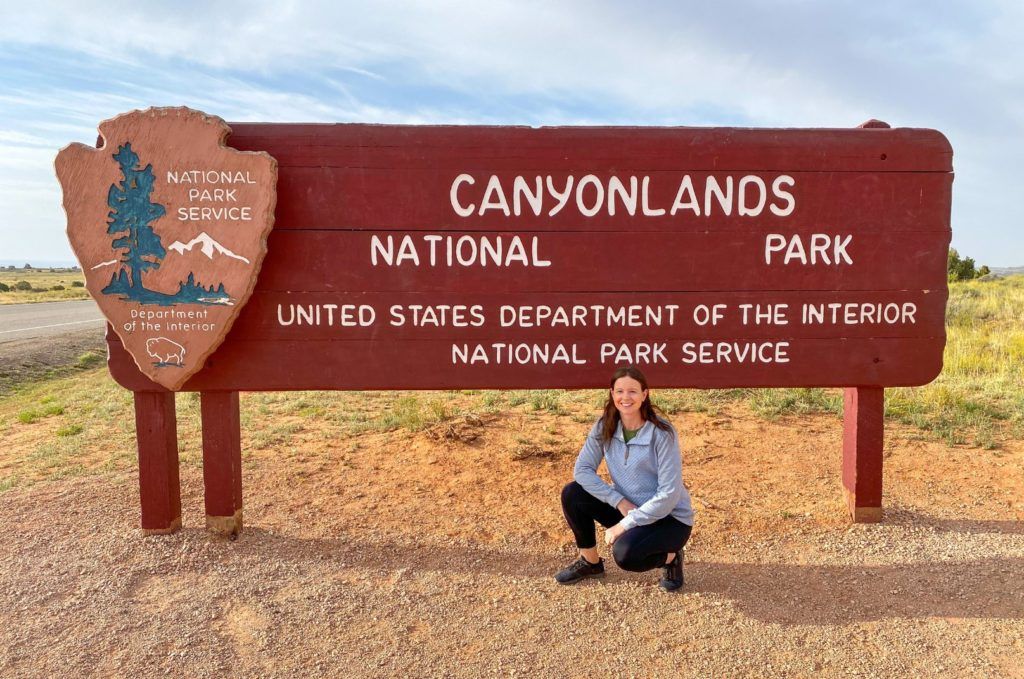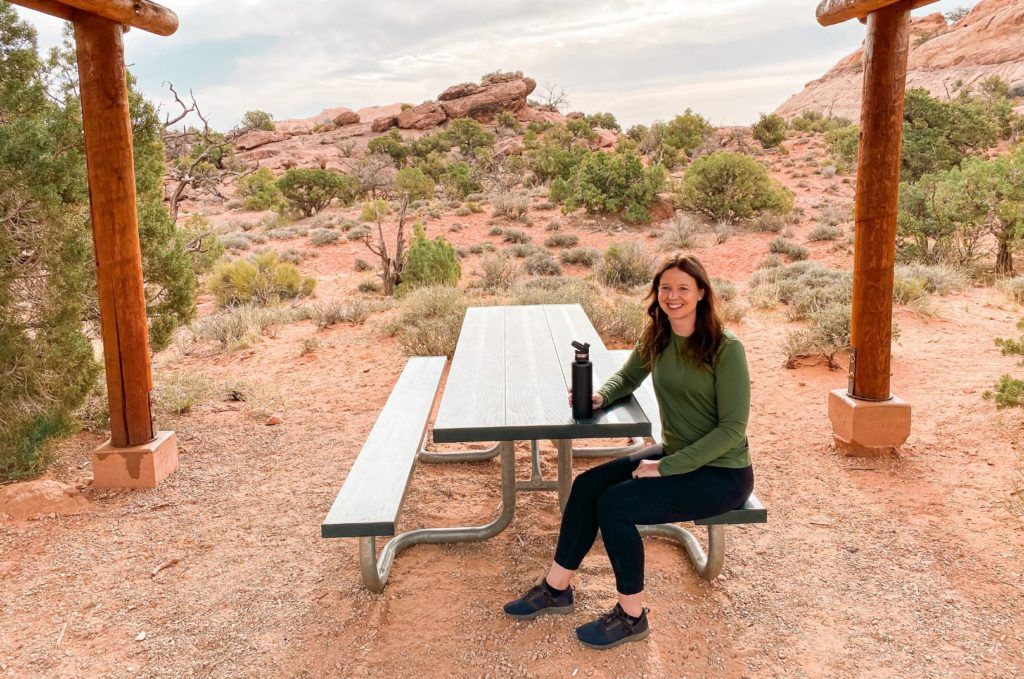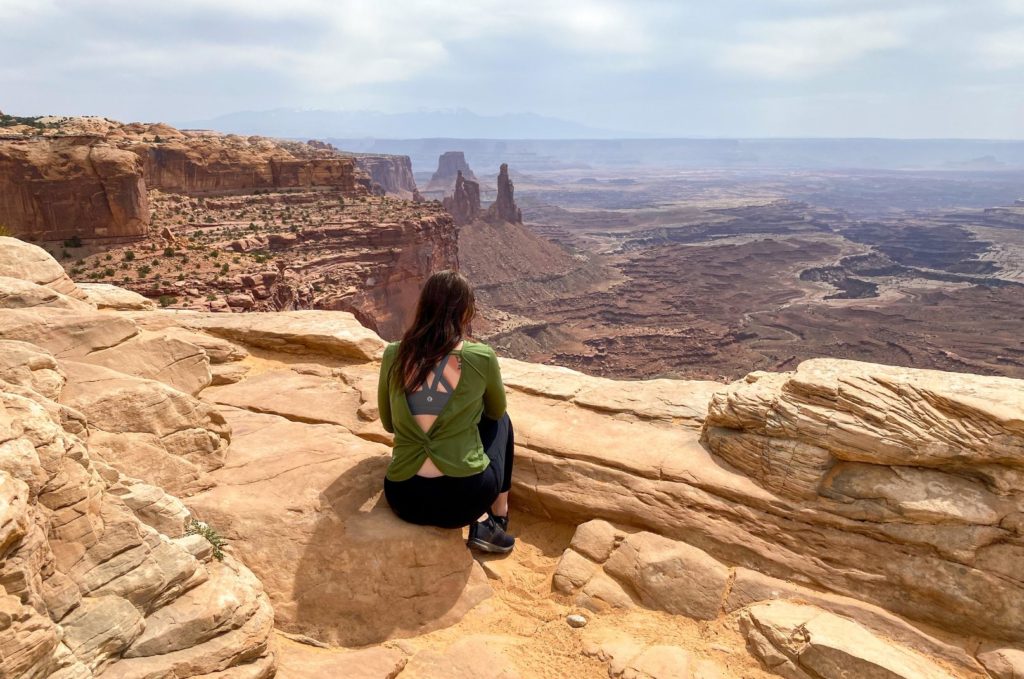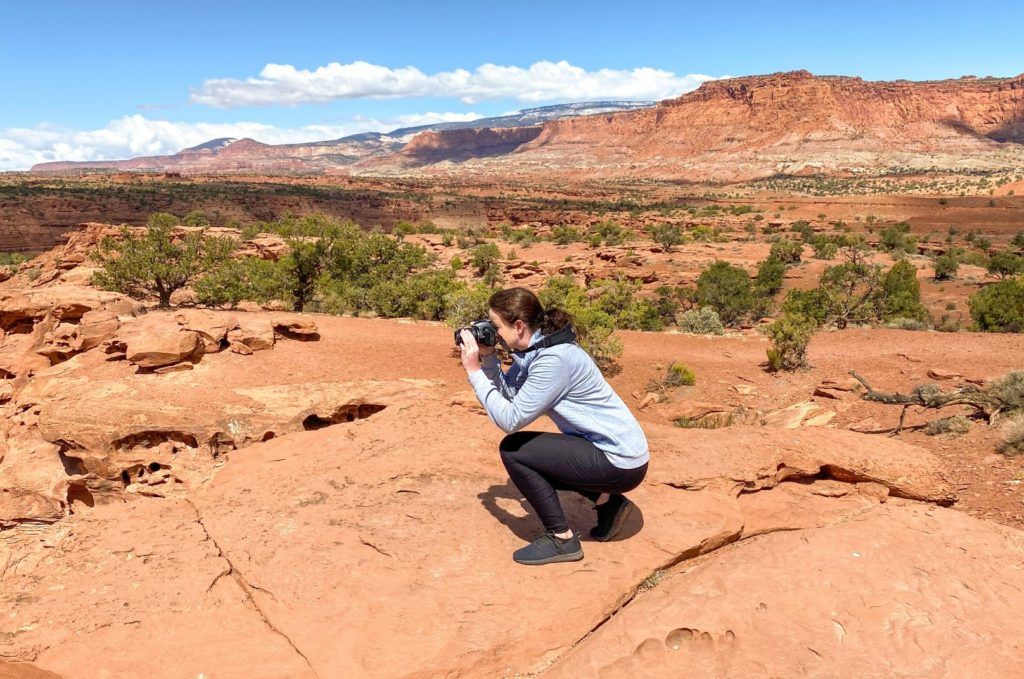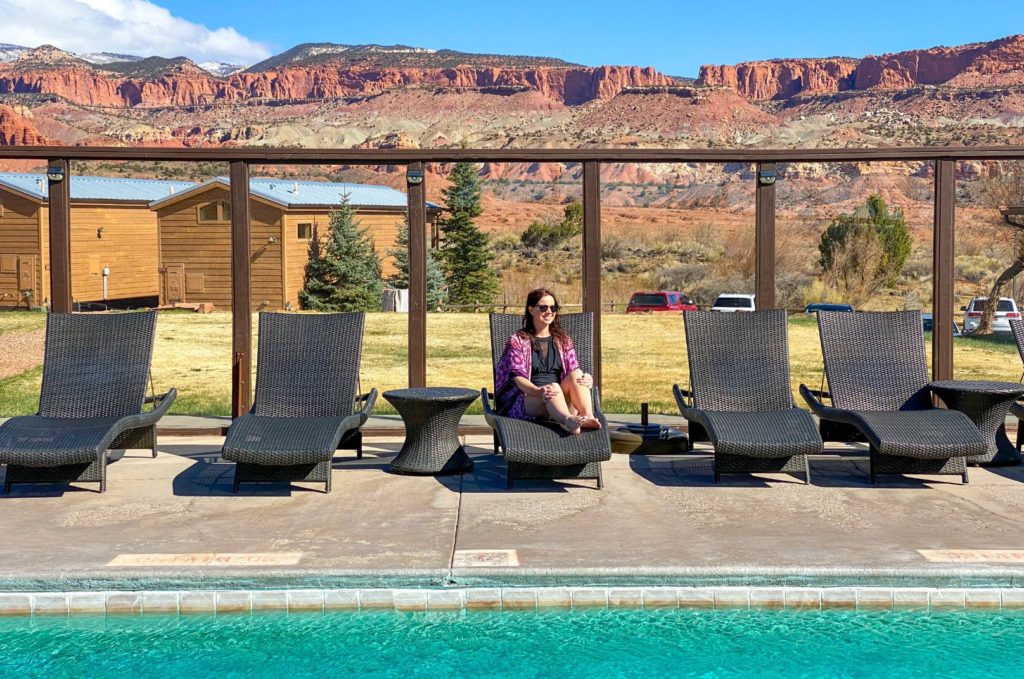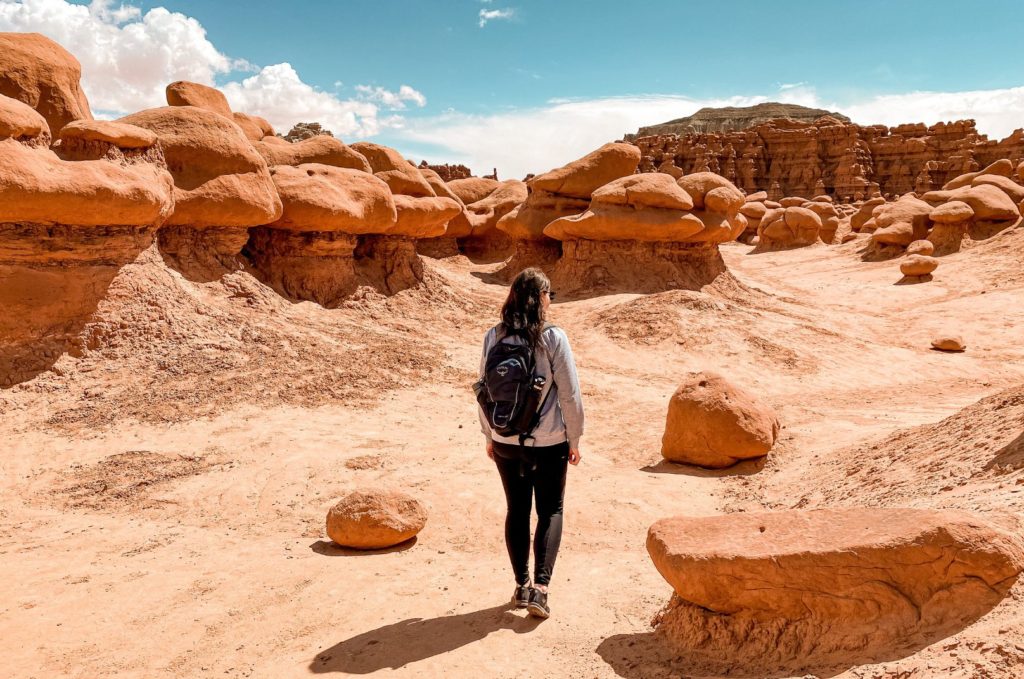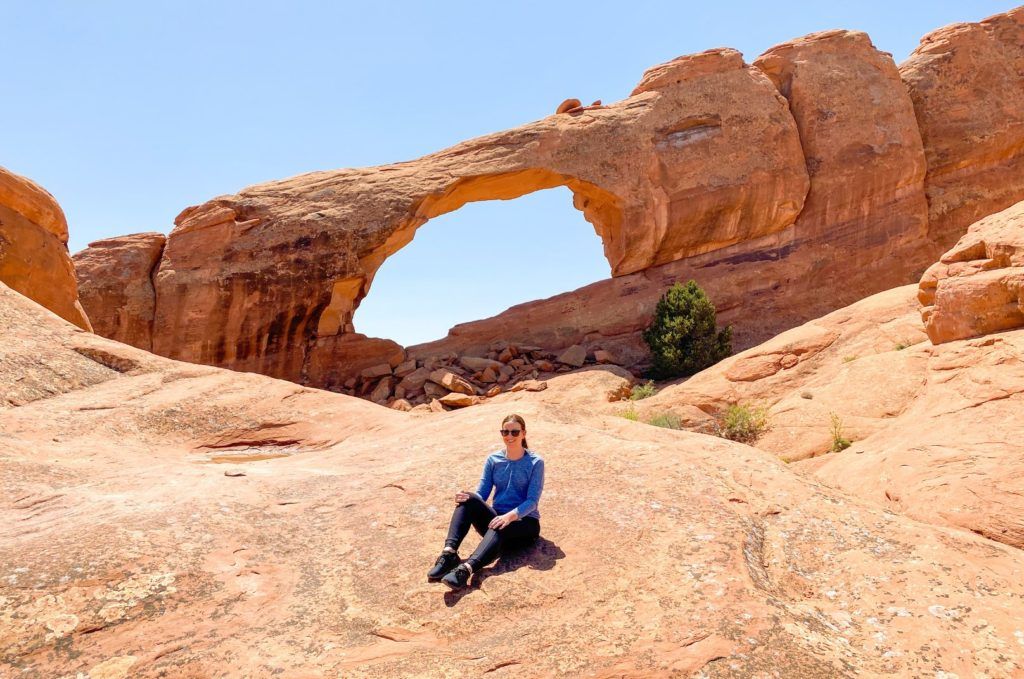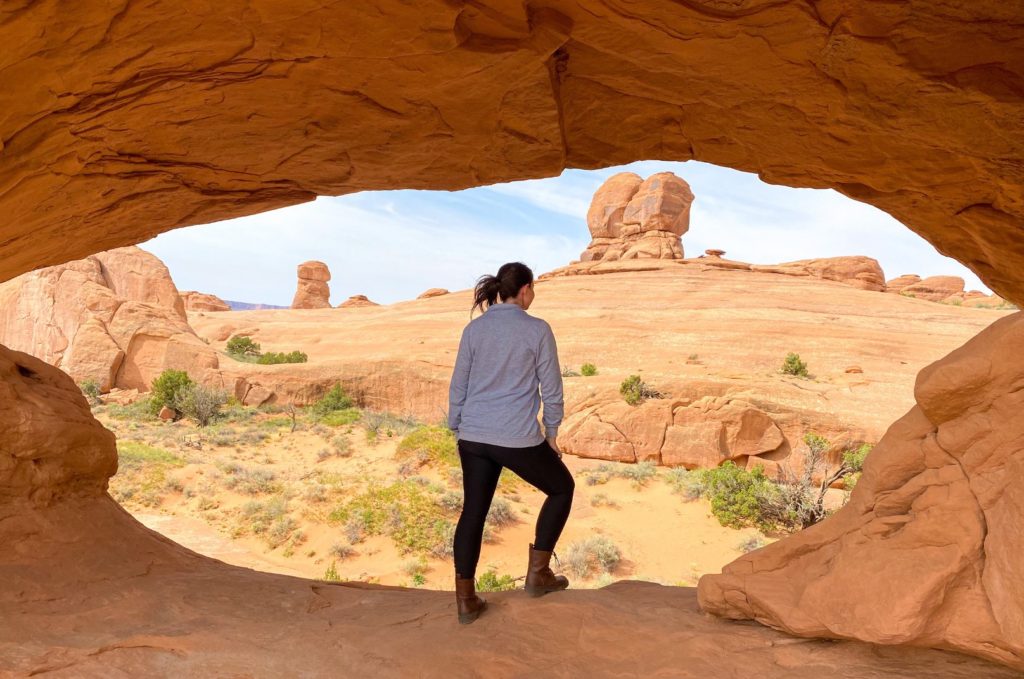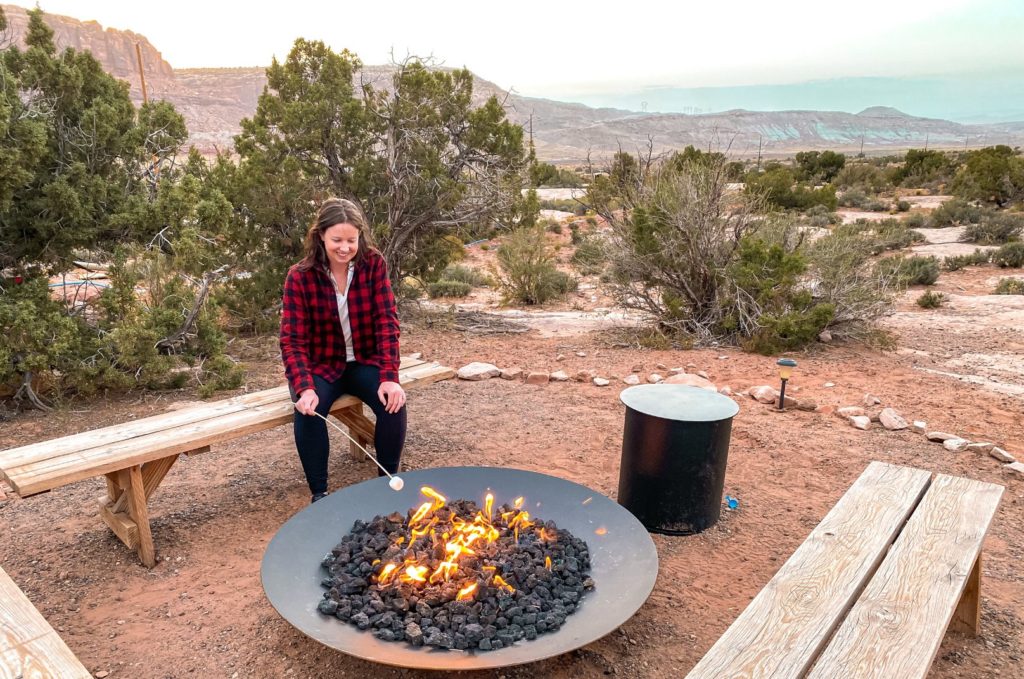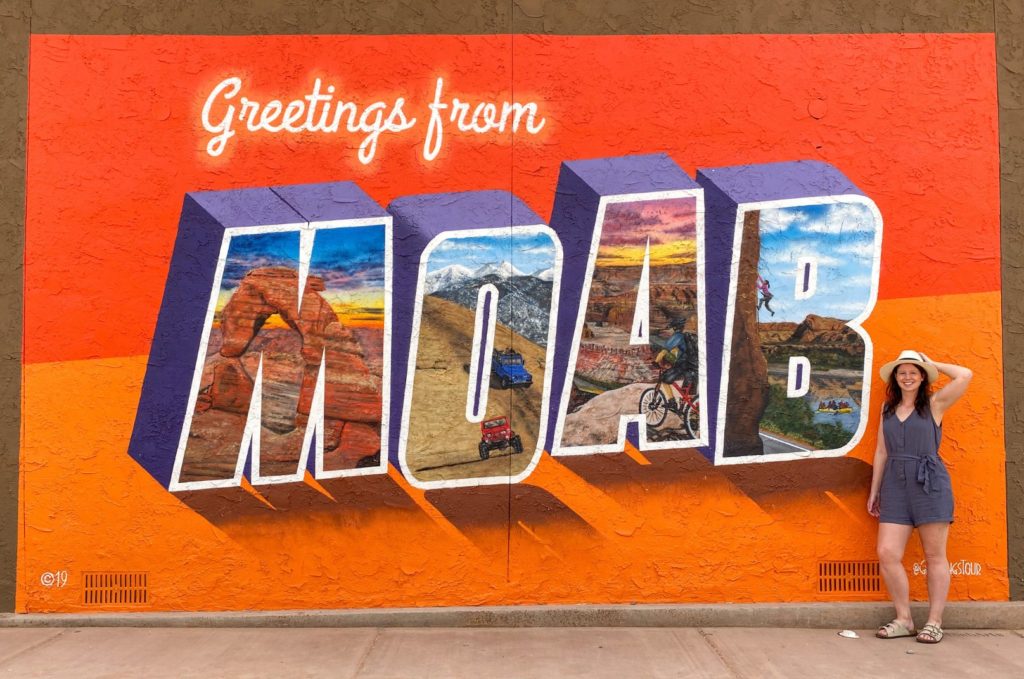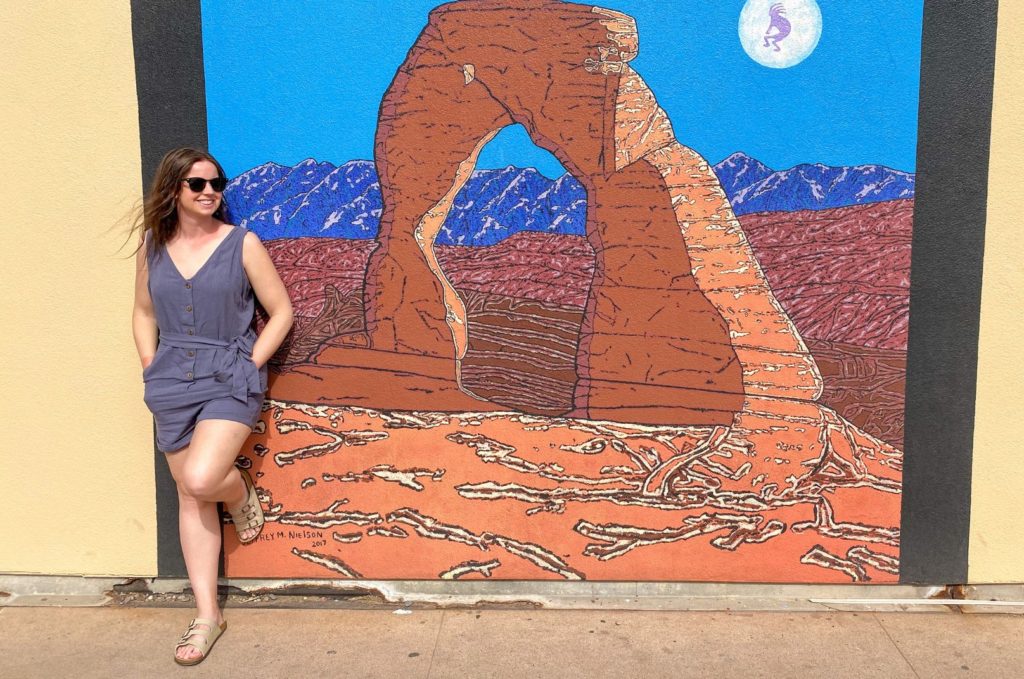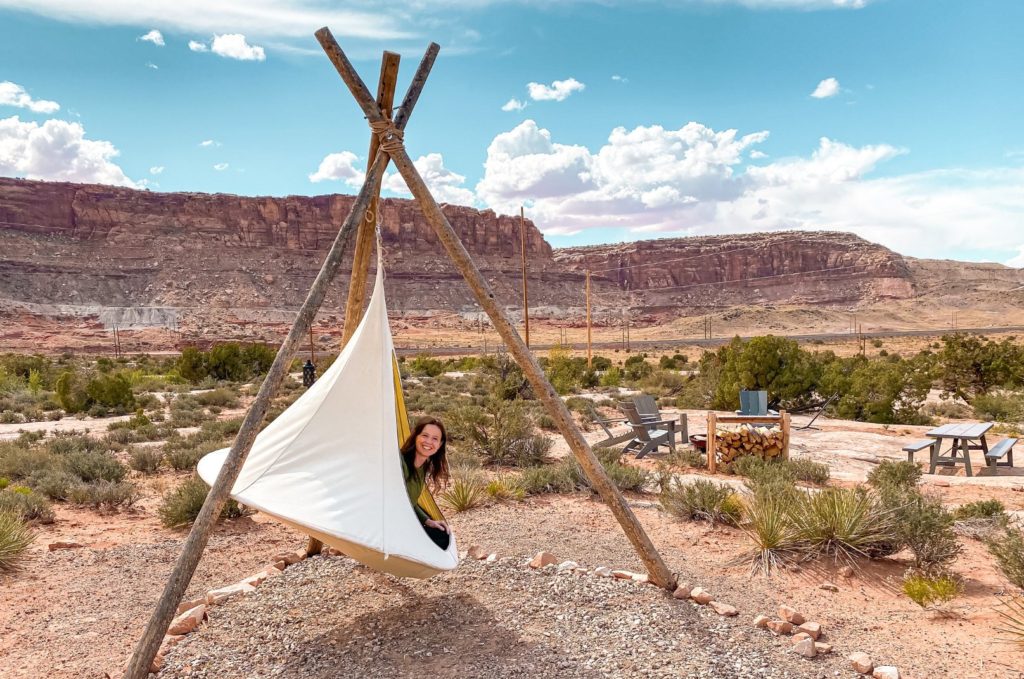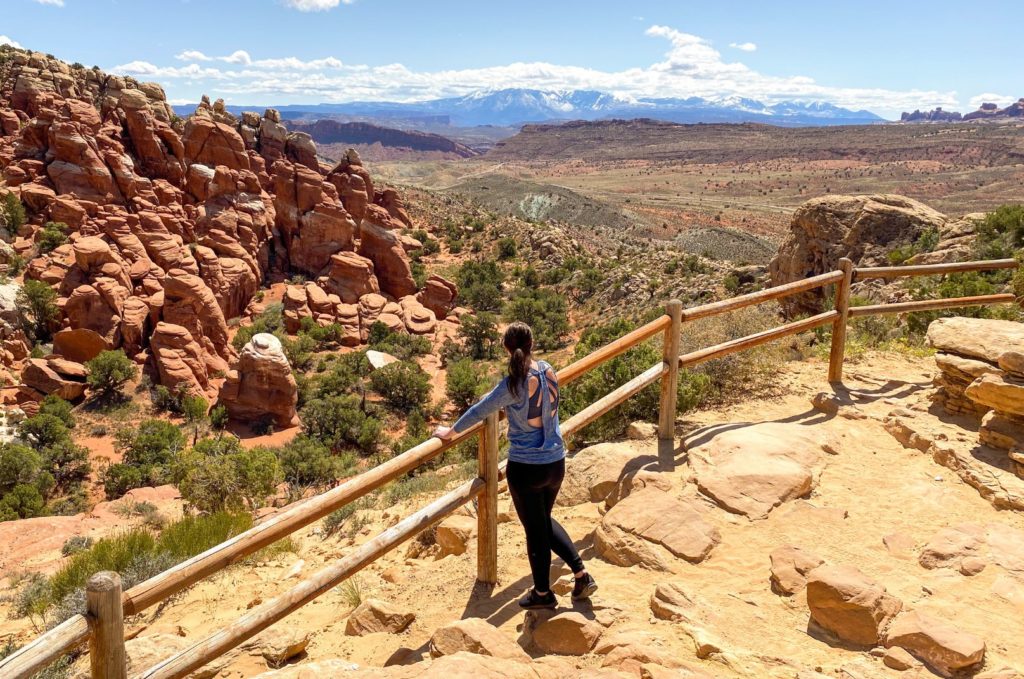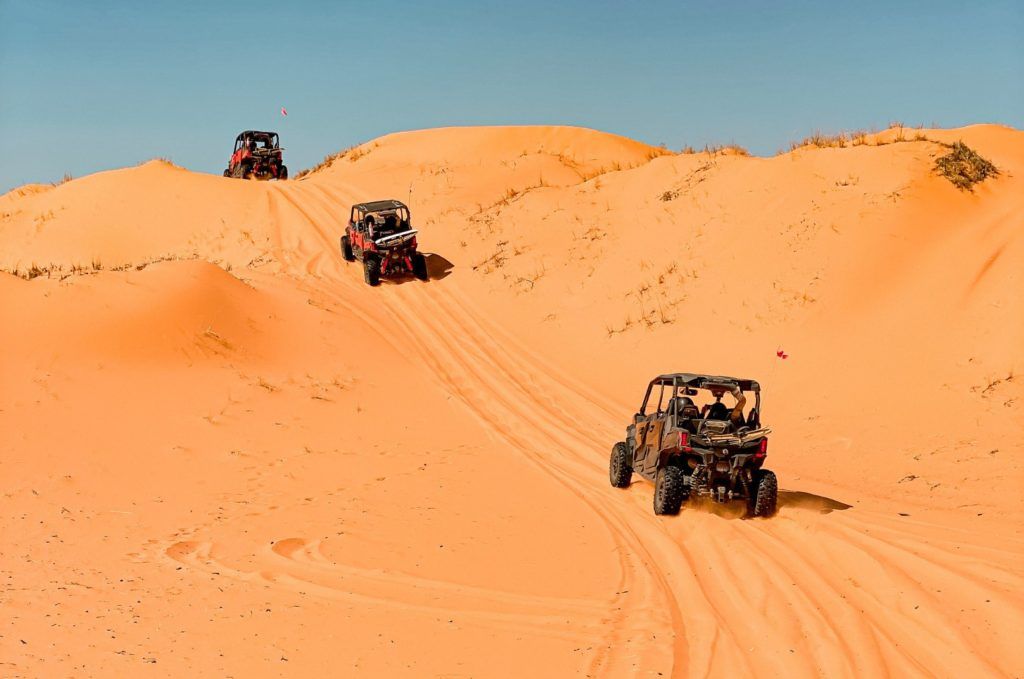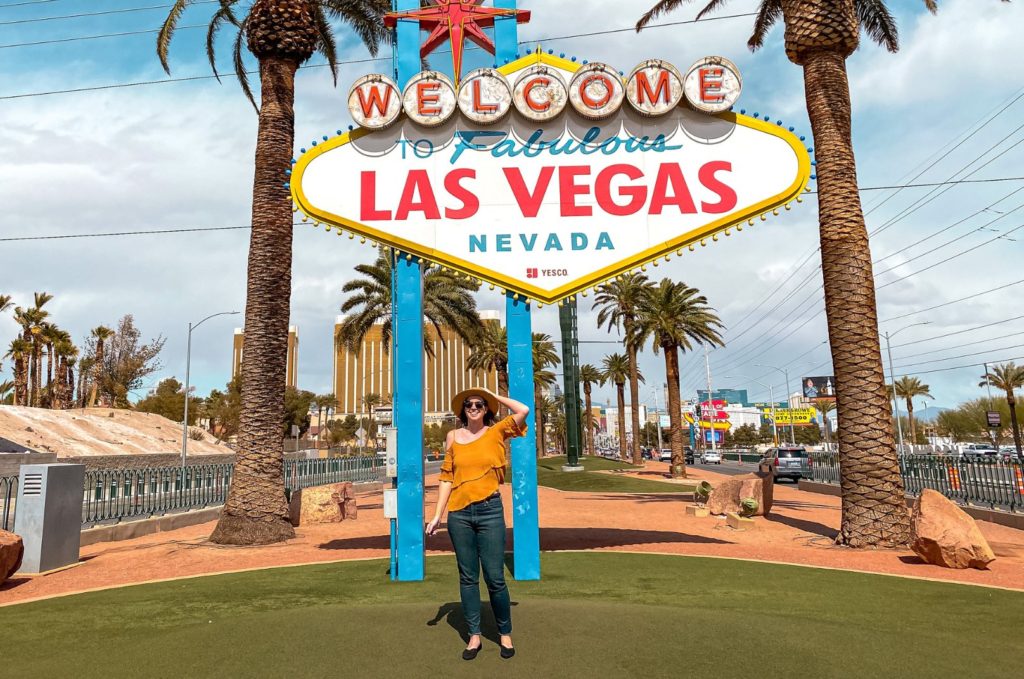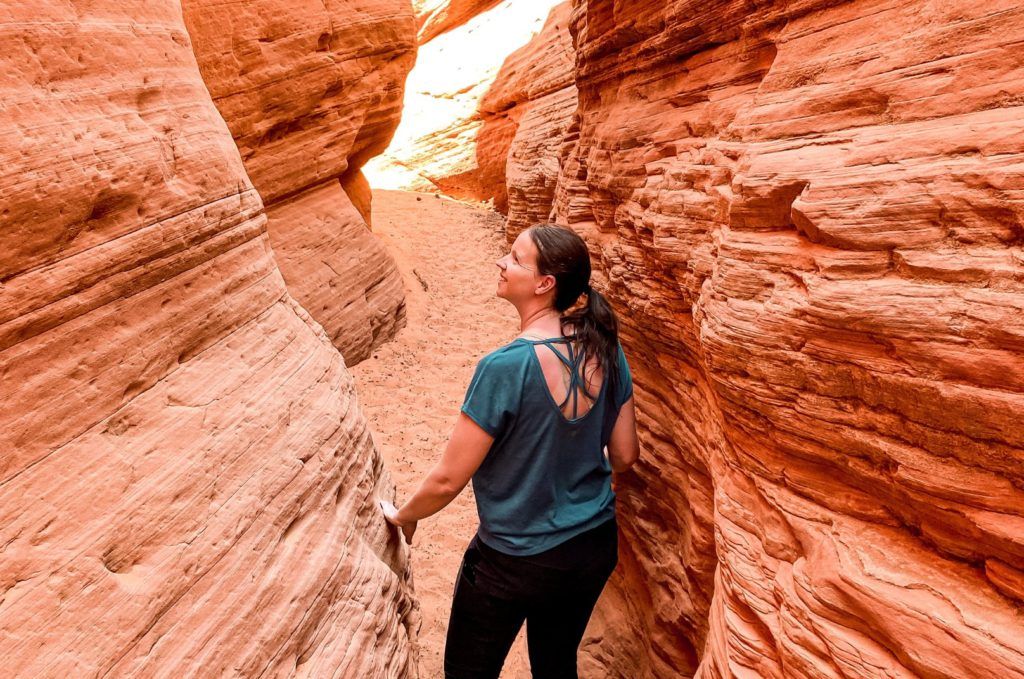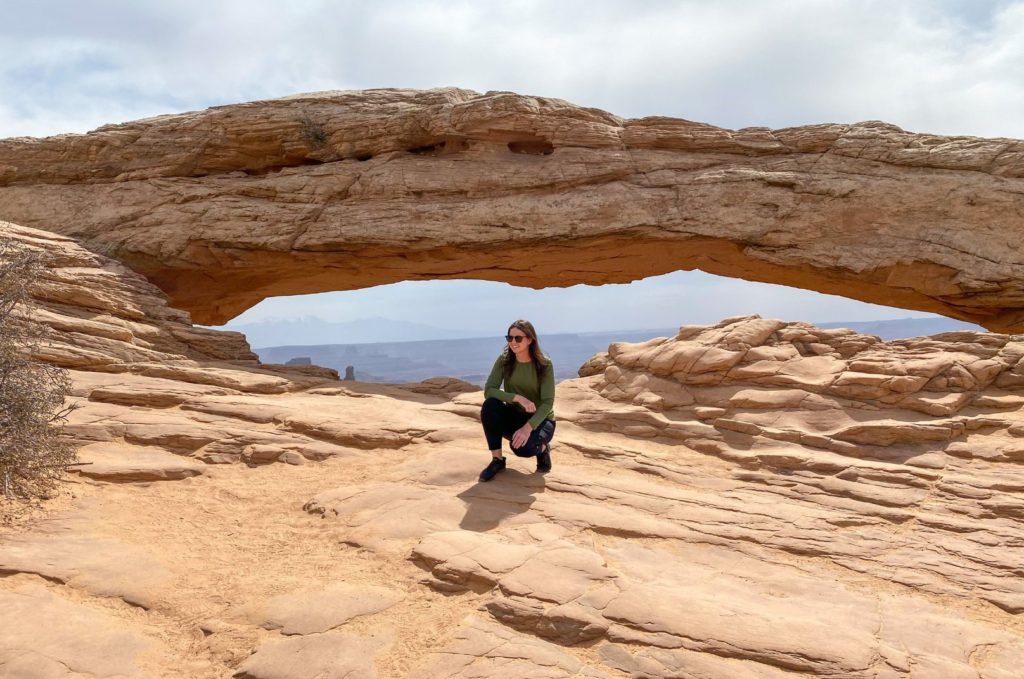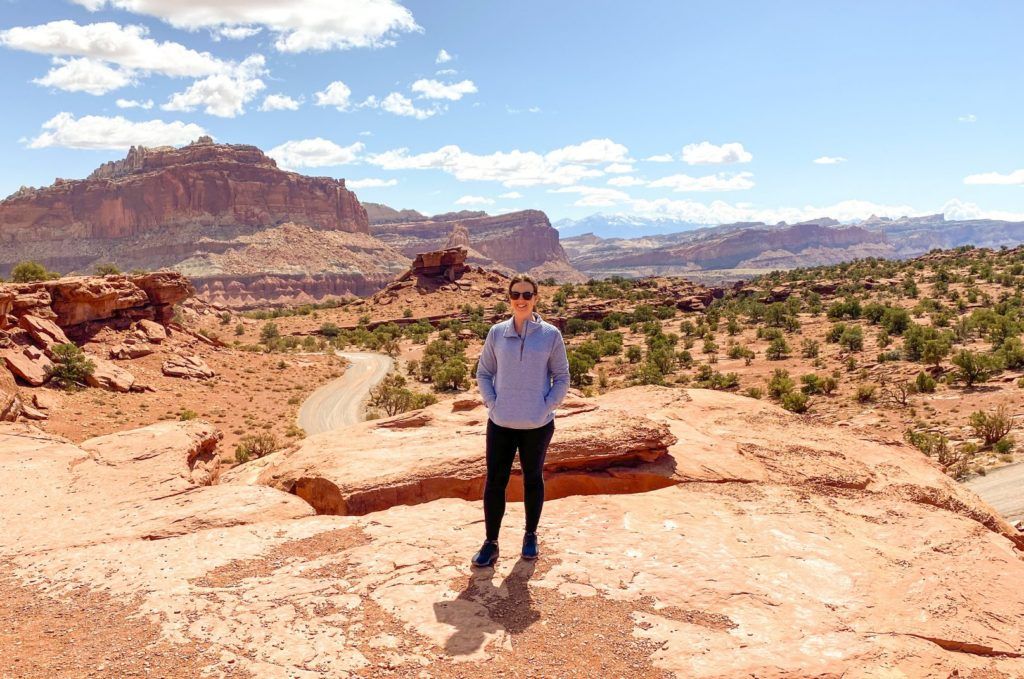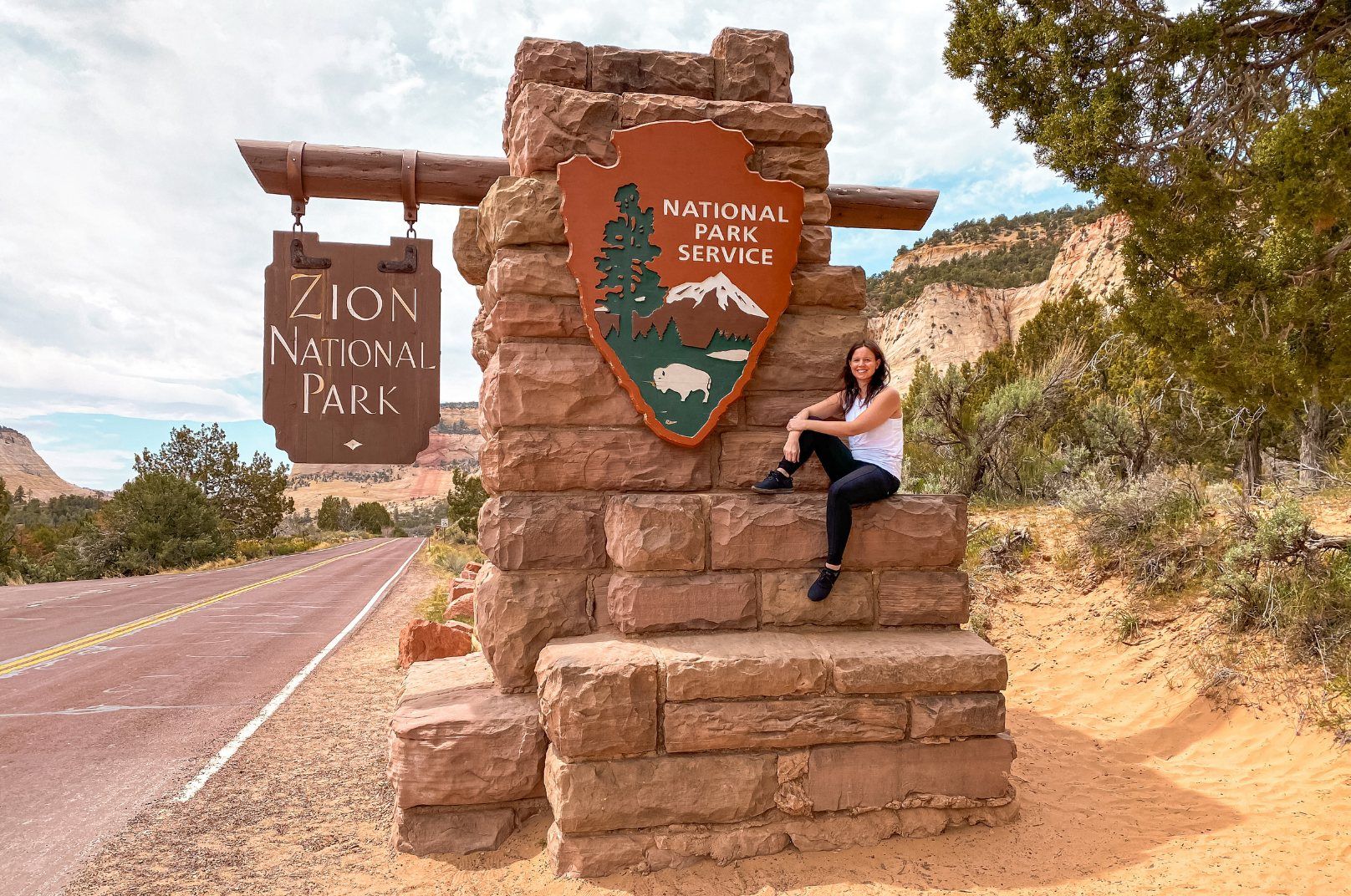
Zion is one of Utah’s “Mighty Five” national parks, along with Bryce Canyon, Capitol Reef, Arches, and Canyonlands. So I rounded up the best glamping in Zion National Park, Utah.
Tips for Visiting Popular National Parks
I highly recommend visiting Zion as part of a Mighty Five road trip, and if you have time, you should take a day trip to Coral Pink Sand Dunes State Park. You can also check out the best hotels and vacation homes near Zion.
Here’s where you can go glamping in Zion National Park, Utah!

Under Canvas Zion
I’ve stayed at several Under Canvas sites, and they are the epitome of luxury. Your tent will have an incredibly comfortable bed, stunning views, and all the amenities of home (minus internet). Plus, there’s a restaurant on-site, and you’ll be right next to the park.

Zions Tiny Oasis
These quirky, tiny homes pack a big punch with their location, decor, and amenities. You can enjoy the fire pit, al fresco dining, private hot tub, grill, and stunning views of nearby Zion National Park.

Zion Wildflower Resort
Zion Wildflower Resort
You can choose from safari tents, covered wagons, and tiny homes at this glamping site. Zion Wildflower Resort is ideally located for exploring the national park, and you’ll love your luxurious accommodation.

Treetop Retreat
If you want a unique home with stunning views in every direction, this modern-meets-rustic treehouse is for you. You’ll have a private bathroom, kitchenette, fire pit, and gas grill. There are also yurts you can rent on this same property.

Zion Glamping Adventures
Zion Glamping Adventures
This glamping site is the perfect “home base” for exploring Zion, Coral Pink Sand Dunes, Bryce Canyon, Lake Powell, Grand Canyon, and other areas in the Grand Circle of National Parks. Your private, luxury tent will have a queen bed, a seating area, a table, chairs, and incredible views.

Shop My National Park Essentials

What are your favorite places to go glamping in Zion National Park Utah? Share with us in the comments!

Plan The Rest Of Your Trip

Recommended Tours in Zion

Frequently Asked Questions
Is there glamping in Zion National Park?
There are several glamping sites near Zion National Park, and the top ones are: Under Canvas Zion, Zions Tiny Oasis, Zion Wildflower Resort, and Zion Glamping Adventures.
Three days is a good amount of time to explore Zion National Park. Here’s my itinerary for 3 days in Zion National Park:
Arrival Day: Arrive at Zion as early as possible and head to the Kolob Canyons Visitor Center. Drive the scenic Kolob Canyons Road and hike the Timber Creek Overlook Trail (easy-moderate, 1 mile, out and back, 100 feet elevation gain).
Day 1: Rent e-bikes and start riding as early as possible. Ride the Pa’rus Trail, then the Zion Canyon Scenic Drive. Go all the way to the end of the scenic drive, and stop as often as you want. Hike Angel’s Landing on this day (strenuous, 5.4 miles out and back, 1500 foot elevation gain, long drop-offs). You’ll need a hiking permit, so plan your biking schedule to accommodate your permit time.
If you don’t want to hike Angel’s Landing, hike the West Rim Trail until it becomes the Angel’s Landing trail, then turn around. You’ll want to pack out your lunch and then have dinner in Springdale or back at your accommodation.
Day 2: Drive the scenic Zion-Mount Carmel Highway. Hike the Canyon Overlook Trail, and stop at all the pull-offs on your side of the road. Keep driving out of Zion’s East Entrance. A herd of bison is usually visible on the right a few miles outside of the park. You can turn around if you get to Zion Mountain Ranch and haven’t seen the bison. Have lunch at Cordwood or Co-op Cafe before heading back into the park and stopping at all the pull-offs on the other side of the scenic drive.
Day 3: Hike The Narrows (Bottom-Up route via the Riverside Walk, 9.4 miles out and back). The Narrows hike averages about 6 hours, and the trail is the Virgin River, so you’ll be wading through ankle to waist-deep water. You’ll want to rent specialized equipment – shoes, a dry suit, neoprene socks, a waterproof bag, and a walking stick – and you’ll need to monitor the weather because flash floods, cold water temperatures, and high water levels can be very dangerous. Plan on this hike taking most of the day, and you’ll want to bring a pack-out lunch, plenty of water, and snacks.
If you don’t want to hike The Narrows, hike the Watchman Trail in the morning, have a picnic lunch or eat in Springdale, then in the afternoon, hike the Lower and Middle Emerald Pools Loop, and if you’re up for it, continue to the Upper Emerald Pool.
Can you stay the night at Zion National Park?
Zion Lodge is the only hotel inside the national park. For camping, I highly recommend staying at one of the two campgrounds inside the park. Watchman Campground is open all year, and South Campground is open in the spring, summer, and fall. Both of these campgrounds fill up fast, so book your site as early as possible.
Here’s my itinerary for 3 days in Zion National Park:
Arrival Day: Arrive at Zion as early as possible and head to the Kolob Canyons Visitor Center. Drive the scenic Kolob Canyons Road and hike the Timber Creek Overlook Trail (easy-moderate, 1 mile, out and back, 100 feet elevation gain).
Day 1: Rent e-bikes and start riding as early as possible. Ride the Pa’rus Trail, then the Zion Canyon Scenic Drive. Go all the way to the end of the scenic drive, and stop as often as you want. Hike Angel’s Landing on this day (strenuous, 5.4 miles out and back, 1500 foot elevation gain, long drop-offs). You’ll need a hiking permit, so plan your biking schedule to accommodate your permit time.
If you don’t want to hike Angel’s Landing, hike the West Rim Trail until it becomes the Angel’s Landing trail, then turn around. You’ll want to pack out your lunch and then have dinner in Springdale or back at your accommodation.
Day 2: Drive the scenic Zion-Mount Carmel Highway. Hike the Canyon Overlook Trail, and stop at all the pull-offs on your side of the road. Keep driving out of Zion’s East Entrance. A herd of bison is usually visible on the right a few miles outside of the park. You can turn around if you get to Zion Mountain Ranch and haven’t seen the bison. Have lunch at Cordwood or Co-op Cafe before heading back into the park and stopping at all the pull-offs on the other side of the scenic drive.
Day 3: Hike The Narrows (Bottom-Up route via the Riverside Walk, 9.4 miles out and back). The Narrows hike averages about 6 hours, and the trail is the Virgin River, so you’ll be wading through ankle to waist-deep water. You’ll want to rent specialized equipment – shoes, a dry suit, neoprene socks, a waterproof bag, and a walking stick – and you’ll need to monitor the weather because flash floods, cold water temperatures, and high water levels can be very dangerous. Plan on this hike taking most of the day, and you’ll want to bring a pack-out lunch, plenty of water, and snacks.
If you don’t want to hike The Narrows, hike the Watchman Trail in the morning, have a picnic lunch or eat in Springdale, then in the afternoon, hike the Lower and Middle Emerald Pools Loop, and if you’re up for it, continue to the Upper Emerald Pool.
How many days do you need in Zion?
I recommend spending a minimum of three days in Zion National Park. Here’s my itinerary for 3 days in Zion National Park:
Arrival Day: Arrive at Zion as early as possible and head to the Kolob Canyons Visitor Center. Drive the scenic Kolob Canyons Road and hike the Timber Creek Overlook Trail (easy-moderate, 1 mile, out and back, 100 feet elevation gain).
Day 1: Rent e-bikes and start riding as early as possible. Ride the Pa’rus Trail, then the Zion Canyon Scenic Drive. Go all the way to the end of the scenic drive, and stop as often as you want. Hike Angel’s Landing on this day (strenuous, 5.4 miles out and back, 1500 foot elevation gain, long drop-offs). You’ll need a hiking permit, so plan your biking schedule to accommodate your permit time.
If you don’t want to hike Angel’s Landing, hike the West Rim Trail until it becomes the Angel’s Landing trail, then turn around. You’ll want to pack out your lunch and then have dinner in Springdale or back at your accommodation.
Day 2: Drive the scenic Zion-Mount Carmel Highway. Hike the Canyon Overlook Trail, and stop at all the pull-offs on your side of the road. Keep driving out of Zion’s East Entrance. A herd of bison is usually visible on the right a few miles outside of the park. You can turn around if you get to Zion Mountain Ranch and haven’t seen the bison. Have lunch at Cordwood or Co-op Cafe before heading back into the park and stopping at all the pull-offs on the other side of the scenic drive.
Day 3: Hike The Narrows (Bottom-Up route via the Riverside Walk, 9.4 miles out and back). The Narrows hike averages about 6 hours, and the trail is the Virgin River, so you’ll be wading through ankle to waist-deep water. You’ll want to rent specialized equipment – shoes, a dry suit, neoprene socks, a waterproof bag, and a walking stick – and you’ll need to monitor the weather because flash floods, cold water temperatures, and high water levels can be very dangerous. Plan on this hike taking most of the day, and you’ll want to bring a pack-out lunch, plenty of water, and snacks.
If you don’t want to hike The Narrows, hike the Watchman Trail in the morning, have a picnic lunch or eat in Springdale, then in the afternoon, hike the Lower and Middle Emerald Pools Loop, and if you’re up for it, continue to the Upper Emerald Pool.
Where do you stay when you visit Zion National Park?
Zion Lodge is the only hotel inside the park. But Zion has lots of accommodation options in the nearby towns.
For camping, I highly recommend staying at one of the two campgrounds inside the park. Watchman Campground is open all year, and South Campground is open in the spring, summer, and fall. Both of these campgrounds fill up fast, so book your site as early as possible.
If you’re bringing an RV or motorhome, opt for Zion Canyon Campground and RV Resort or Zion River Resort RV Park & Campground.
Is Zion crowded?
Yes! You can avoid some of the crowds at Zion by visiting in the winter, spring, or fall, avoiding holidays and Spring Break weeks, visiting on weekdays, and arriving at the park early in the morning.
How long is the scenic drive in Zion?
About 54 miles.
I recommend spending a minimum of three days in Zion National Park, but if you only have two days, here are my recommendations:
Arrival Day: Arrive at Zion as early as possible and head to the Kolob Canyons Visitor Center. Drive the scenic Kolob Canyons Road and hike the Timber Creek Overlook Trail (easy-moderate, 1 mile, out and back, 100 feet elevation gain).
Day 1: Rent e-bikes and start riding as early as possible. Ride the Pa’rus Trail, then the Zion Canyon Scenic Drive. Go all the way to the end of the scenic drive, and stop as often as you want. Hike Angel’s Landing on this day (strenuous, 5.4 miles out and back, 1500 foot elevation gain, long drop-offs). You’ll need a hiking permit, so plan your biking schedule to accommodate your permit time.
If you don’t want to hike Angel’s Landing, hike the West Rim Trail until it becomes the Angel’s Landing trail, then turn around. You’ll want to pack out your lunch and then have dinner in Springdale or back at your accommodation.
Day 2 Option 1: Drive the scenic Zion-Mount Carmel Highway. Hike the Canyon Overlook Trail, and stop at all the pull-offs on your side of the road. Keep driving out of Zion’s East Entrance. A herd of bison is usually visible on the right a few miles outside of the park. You can turn around if you get to Zion Mountain Ranch and haven’t seen the bison. Have lunch at Cordwood or Co-op Cafe before heading back into the park and stopping at all the pull-offs on the other side of the scenic drive.
Day 2 Option 2: Hike The Narrows (Bottom-Up route via the Riverside Walk, 9.4 miles out and back). The Narrows hike averages about 6 hours, and the trail is the Virgin River, so you’ll be wading through ankle to waist-deep water. You’ll want to rent specialized equipment – shoes, a dry suit, neoprene socks, a waterproof bag, and a walking stick – and you’ll need to monitor the weather because flash floods, cold water temperatures, and high water levels can be very dangerous. Plan on this hike taking most of the day, and you’ll want to bring a pack-out lunch, plenty of water, and snacks.
Is Bryce Canyon or Zion better?
Zion and Bryce Canyon National Park are both incredible destinations that will give you very different experiences. I highly recommend visiting both of these parks as part of a Utah “Mighty Five” road trip.
What is the best month to visit Zion National Park?
Zion National Park is open 24 hours a day, every day of the year.
Spring and Fall are the shoulder seasons and the best times to visit. Daytime temperatures will be pleasant in the 60s-70s, and the crowds will be more manageable than in the summer. And as long as you avoid Spring break weeks and Labor Day weekend, you can score some great accommodation deals during these months.
December – March are the best months to avoid the crowds and get cheap accommodation, but it can be too cold and windy to enjoy the higher elevations, and some roads and trails close because of snow and ice. Winter temperatures rarely get above 50 during the day and go below freezing at night, so bring layers. The Zion shuttle doesn’t run during these months, so you’ll need your own car to explore all of the park.
Summer is the peak travel season. You can beat some of the crowds and lines by going on weekdays, arriving early in the morning, and renting e-bikes to avoid the crowded shuttles. Days in June, July, and August are hot (temperatures can get in the 100s), and there’s little to no shade on many of the trails. So always have more water than you think you’ll need, a hat, and sunscreen. Accommodations are expensive and book up fast during these months, so make your reservations as far in advance as possible.
The monsoon season is from late July to September, when flash floods are common. You’ll need to monitor the weather continuously, and don’t attempt water hikes (such as The Narrows) if conditions are dangerous.

This article about glamping in Zion National Park Utah is not a sponsored post, and the thoughts and opinions expressed in this post about glamping in Zion National Park Utah are entirely my own. Some of the links in this post about glamping in Zion National Park Utah are affiliate links, and, at no cost to you, I may earn a small commission.
 Destinations
Destinations Packing
Packing Travel Tips
Travel Tips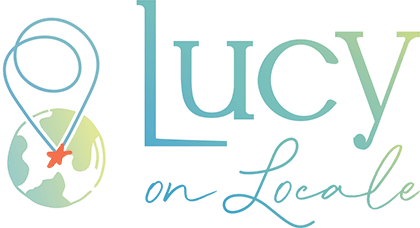
 Photography
Photography Points & Miles
Points & Miles Credit Cards
Credit Cards
